Table Of Contents
Are you looking to give your resin patio furniture a fresh new look? Wondering if it's possible to paint resin furniture?
This article will answer all your questions about painting resin patio furniture, including the benefits, types of paint to use, and step-by-step instructions. We'll also cover important safety precautions and tips for maintaining your newly painted furniture.
If you're ready to transform your outdoor space, keep reading to learn how to paint resin patio furniture like a pro!
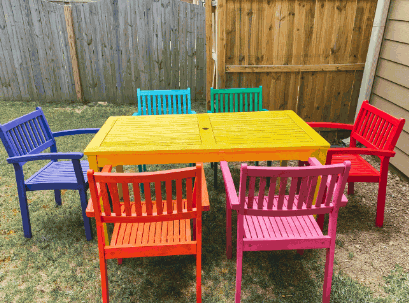
Resin patio furniture, commonly known as plastic wicker or synthetic resin wicker, is a type of outdoor furniture designed to withstand various weather conditions, making it ideal for outdoor settings.
This type of furniture is constructed using a high-quality resin material, which is durable, weather-resistant, and easy to maintain. Resin patio furniture is crafted to mimic the look of natural wicker while offering enhanced durability and longevity.
Its composition ensures that it can withstand exposure to sunlight, rain, and other outdoor elements without fading, cracking, or warping. Resin patio furniture is lightweight, making it easy to move around and rearrange to suit different outdoor layouts.
Common applications of resin patio furniture include outdoor dining sets, lounge chairs, and sofas, providing a stylish and comfortable seating option for patios, decks, or gardens.
Explore further: How To Clean Resin Patio Furniture
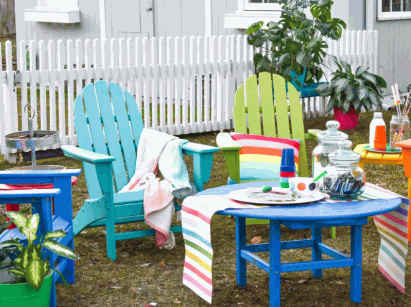
The benefits of resin patio furniture are numerous, including its durability, easy maintenance, and suitability for outdoor environments.
Resin patio furniture is known for its ability to withstand different weather conditions without deteriorating, making it a reliable choice for outdoor settings. Its durability means that it can last for years without showing signs of wear and tear, offering long-term value for homeowners. These pieces are easy to clean, requiring simple care to maintain their appearance over time. This low-maintenance aspect appeals to those seeking hassle-free outdoor furniture options.

Yes, resin patio furniture can be painted, providing an excellent opportunity to refresh and customize your plastic outdoor furniture using various paint products designed specifically for this purpose.
Various types of paint, including spray paint and bonding primer, can be used on resin patio furniture to ensure a durable and long-lasting finish.
Regarding painting resin patio furniture, spray paint is a popular choice due to its ease of application and ability to create a smooth, even coat. The fast-drying nature of spray paint makes it convenient for outdoor projects, allowing you to complete the task efficiently. On the other hand, bonding primer is essential for preparing the surface of the resin furniture, ensuring that the paint adheres properly and resists chipping and peeling over time.
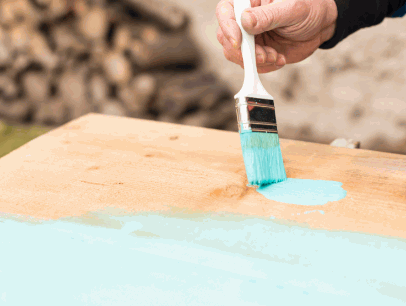
The steps to painting resin patio furniture involve cleaning the surface, sanding, applying a paint primer, and using the appropriate paint resin to achieve the desired finish.
To begin, start by thoroughly cleaning the patio furniture using a mild detergent and warm water to remove any dirt or debris. Once the furniture is clean and dry, proceed to sand the surface lightly to create a smooth and paint-ready finish.
Next, apply a paint primer specifically designed for resin surfaces to ensure proper adhesion and durability of the paint.
After the primer has dried according to the manufacturer's instructions, choose a high-quality paint resin suitable for outdoor use. Apply the paint resin evenly using a brush or spray gun, following the grain or direction of the furniture for a professional-looking finish. Allow the paint to dry completely between coats for optimal results.
Here are some essential tips for painting resin patio furniture, including preparation techniques, the importance of using the right products like spray painting resin, and applying a clear coat sealer for added protection.
Before painting, it is crucial to clean the furniture thoroughly using an outdoor cleaner, a garden hose, or a pressure washer to remove dirt and debris.
Cleaning resin patio furniture before painting not only ensures a smooth and long-lasting finish but also helps in maintaining the overall look of your outdoor space. An outdoor cleaner is a handy tool that can effectively cut through built-up grime and stains on the furniture surface. By using a garden hose, you can easily rinse off the loosened dirt and cleaner residue, leaving behind a clean canvas for your paint job.
For tougher stains or deeply embedded dirt, a pressure washer can be a game-changer. The high-pressure water stream can reach into crevices and cracks, removing stubborn debris that might be missed by manual cleaning methods. It's essential to use the pressure washer at a safe distance to avoid damaging the furniture.
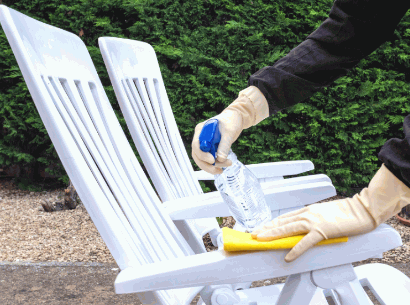
Sanding the surface of resin patio furniture, including plastic wicker, is essential to create a rough texture that helps improve paint adhesion.
This preparatory step is crucial in ensuring that the paint properly adheres to the furniture, resulting in a durable finish that can withstand outdoor elements. By sanding the resin material, any existing gloss or smooth surface is removed, allowing the paint to grip onto the furniture more effectively. It is recommended to use fine-grit sandpaper to achieve the desired roughness without damaging the furniture. Paying attention to details such as edges and intricate designs will guarantee an even surface for painting.
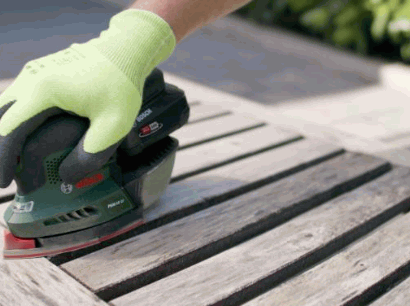
Applying a bonding primer or paint primer is a crucial step in preparing resin patio furniture for painting, as it ensures the paint adheres properly to the surface.
Priming resin patio furniture before painting creates a strong foundation that helps the paint bond effectively to the surface, resulting in a smoother and more durable finish that can withstand outdoor elements. Bonding primers or paint primers not only enhance adhesion but also improve the overall appearance and longevity of the painted furniture. These primers seal the surface, prevent peeling or chipping, and provide better coverage, making the painting process more efficient and effective.
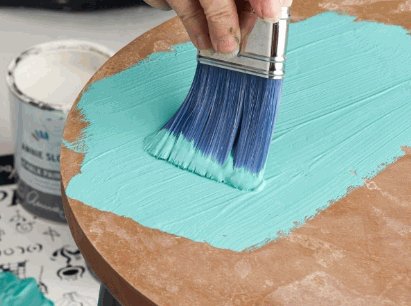
Choosing the right paint, such as spray paint or paint resin, is essential for achieving a durable and attractive finish on your outdoor furniture.
Regarding selecting paint for resin patio furniture, several factors should be considered to ensure a successful painting project. First and foremost, you need to choose a paint that is specifically formulated for outdoor use, so it can withstand varying weather conditions.
Consider the color options available as well as the type of finish you desire. Spray paint offers a convenient way to apply an even coat to intricate designs and crevices, while paint resin provides a more durable and long-lasting finish for your furniture.
To achieve a smooth and durable finish, apply multiple coats of paint to resin patio furniture, followed by a clear coat sealer for added protection.
Start by preparing the surface by cleaning it thoroughly and allowing it to dry completely. Use a suitable primer to ensure the paint adheres properly to the resin material. When applying the paint, use smooth, even strokes to prevent drips and ensure an even coverage across the furniture's surface.
Allow each coat of paint to dry completely before applying the next one to prevent bubbling or peeling. The number of coats needed may vary depending on the desired color intensity and the condition of the furniture.
Once the final coat of paint is dry, apply a clear coat sealer to protect the paint from chipping, fading, and other damage caused by exposure to sunlight and moisture.
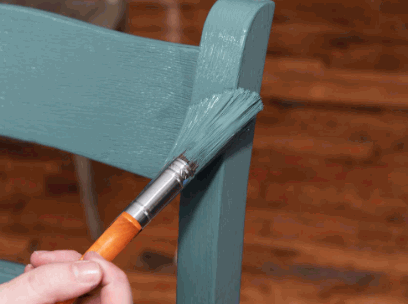
When painting resin patio furniture, it is essential to follow safety precautions, such as wearing protective gear and working in a well-ventilated area, to ensure a safe and effective painting process.
Always wear protective gear, such as gloves, masks, and eye protection, when painting resin patio furniture to ensure your safety.
Protective gear is essential as it shields you from potential hazards like chemical fumes, irritating particles, and harmful vapors that may be present in the paint or resin. Gloves are crucial in protecting your hands from coming into direct contact with the chemicals, preventing skin irritation or allergic reactions.
Masks should be worn to avoid inhaling harmful fumes and particles, ensuring your respiratory system remains unharmed. Eye protection, such as safety goggles, is vital in safeguarding your eyes from splashes of paint or resin, which could cause serious damage if they come in contact with your eyes.

To minimize exposure to fumes, always work in a well-ventilated area when painting resin patio furniture, especially when using spray paint.
Proper ventilation is crucial as it helps in dispersing any toxic gases or fumes that are released during the painting process.
When using spray paint, the particles in the air can linger and be harmful if inhaled over an extended period.
By ensuring good airflow, you reduce the risk of inhaling these harmful substances, promoting a safer working environment.
Always follow the manufacturer's instructions for the paint products you are using to ensure the best results when painting resin patio furniture.
Remember, these instructions are specifically designed to help you achieve optimal adhesion, durability, and overall finish on your resin patio furniture. Ignoring them could lead to issues like peeling, uneven coverage, or premature wear and tear. By adhering to the guidelines provided, you not only ensure a professional-looking result but also prioritize the longevity and safety of your furniture. Investing the time to read and follow these instructions will pay off in the form of a beautifully painted patio set that stands the test of time.
Maintaining painted resin patio furniture involves regular cleaning, touching up any chips or scratches, and storing the furniture properly during winter months to ensure its longevity.
Regularly clean your painted resin patio furniture with an outdoor cleaner and a garden hose to keep it looking fresh and new.
It's crucial to maintain the appearance and longevity of your outdoor furniture by regularly cleaning it. Over time, dirt, dust, and grime can accumulate on the surface, which not only dulls its look but can also lead to deterioration if left unchecked. Utilizing an outdoor cleaner specially formulated for resin materials will help lift away any stubborn stains without damaging the painted finish.
When cleaning, start by spraying the furniture with the outdoor cleaner making sure to cover all areas. Use a soft-bristled brush to gently scrub any tough spots, then rinse thoroughly with a garden hose. This simple yet effective cleaning routine will refresh your patio furniture, allowing you to enjoy it for years to come.
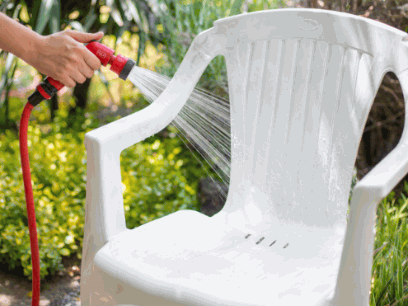
Periodically touch up your painted resin patio furniture with the appropriate paint products to address minor repairs and maintain its appearance.
When dealing with painted resin patio furniture, it is crucial to use paint products specifically formulated for outdoor use to ensure durability against weather elements. It is recommended to clean the surface thoroughly before applying touch-up paint to ensure proper adhesion. Whether your furniture has chipped paint, scratches, or other minor imperfections, a touch-up can revive its look and prevent further damage.
Before starting, gather the necessary supplies such as sandpaper, primer, and matching paint color. Make sure to follow the manufacturer's instructions for best results.
To protect your painted resin patio furniture during winter months, store it properly to shield it from harsh weather conditions and prolong its lifespan.
One effective way to store your painted resin patio furniture is to bring it indoors if possible. This will provide the highest level of protection against freezing temperatures, moisture, and snow. If indoor storage is not feasible, consider investing in high-quality furniture covers specifically designed for outdoor use. Make sure the covers fit snugly and are made of durable, waterproof material to prevent any water damage. Store the furniture in a dry, well-ventilated area to avoid mold and mildew growth. Proper storage is essential to ensure your furniture stays looking its best for years to come.
Table Of Contents
Resin patio furniture can add beauty and functionality to your outdoor space, but it requires regular cleaning to maintain its appearance and longevity.
We discuss the importance of cleaning resin patio furniture, the benefits of doing so, the tools and supplies needed for the job, the best cleaning solutions to use, and a step-by-step guide to effectively clean your furniture.
We provide tips for maintaining your furniture and common mistakes to avoid. By following these guidelines, you can enjoy clean and well-maintained resin patio furniture for years to come.
Discover more: What Is Resin Wicker Patio Furniture
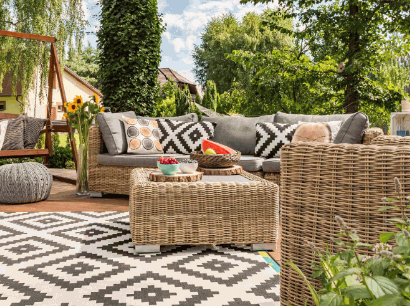
Keeping your resin patio furniture clean is essential to ensure its longevity and maintain its aesthetic appeal, as dirt and grime can accumulate on the surface, affecting both the appearance and durability of your outdoor furniture.
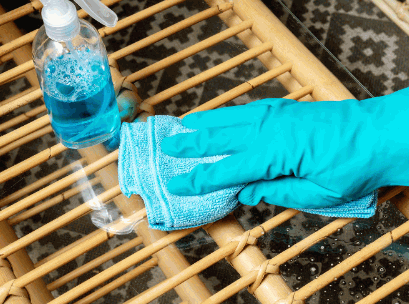
Regularly cleaning your resin patio furniture offers numerous benefits, including the removal of dirt, prevention of mold and mildew, and preservation of the furniture's original color and texture.
By cleaning your resin furniture regularly, you not only maintain its aesthetic appeal but also extend its lifespan. Preventing wear and tear is crucial for ensuring that your outdoor furniture stays in top condition for years to come. A thorough cleaning routine can help avoid stains caused by spills or environmental factors that could affect the appearance of your furniture.
Utilizing a mixture of water and detergent can effectively break down grime and dirt without damaging the material. For tougher stains or deeply embedded dirt, a solution of water and bleach can be used sparingly and with caution to restore the furniture's original shine.
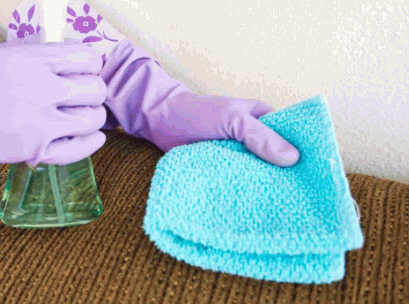
To effectively clean your resin patio furniture, you will need a variety of tools and supplies, including a pressure washer, a soft brush, microfiber cloths, and appropriate cleaning solutions.
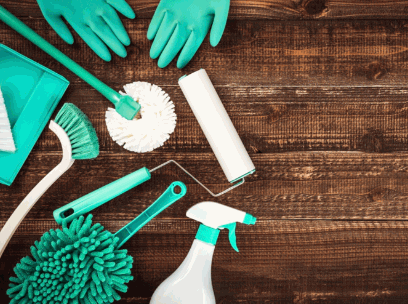
The best cleaning solutions for resin patio furniture typically include mild detergent mixed with water, white vinegar, and specialized resin cleaners.
Regarding maintaining the pristine appearance of your resin furniture, opting for homemade solutions using everyday household items can be both effective and budget-friendly. A simple mixture of white vinegar and water can work wonders in tackling dirt and grime without damaging the resin material. Additionally, commercial resin cleaners offer a specialized approach for tougher stains or deep cleaning needs. It's important to follow the manufacturer's guidelines and perform a spot test before applying any cleaning solution to ensure the best results.
Cleaning resin patio furniture involves a systematic approach to ensure that every part of the furniture is thoroughly cleaned and maintained, from preparation to rinsing and drying.
Preparation involves gathering all necessary tools and cleaning supplies, such as brushes, cleaners, and protective gear, and setting up a cleaning area.
It is essential to ensure that the brushes are suitable for the type of resin furniture being cleaned to avoid any damage. Ahead of starting the cleaning process, check the manufacturer's guidelines for any specific recommendations on cleaning products.
Protective gear like gloves, goggles, and masks should be worn to prevent skin irritation and inhalation of fumes. Setting up a designated cleaning area will help in maintaining organization and preventing any spills or messes from spreading.
Removing dirt and debris from your resin furniture is the first cleaning step, which can be effectively done using a soft brush or cloth to loosen and wipe away surface dirt.
Ensuring that your resin furniture is free of dirt and debris is crucial for maintaining its beauty and longevity. By using a soft brush, you can gently scrub the surfaces to dislodge any stubborn particles. Be sure to pay attention to crevices and corners where dirt can accumulate.
After loosening the dirt, use a clean cloth to wipe away the loosened debris. This process not only improves the appearance of your furniture but also prevents scratches that can occur when dirt is left unattended. A thorough cleaning at this stage sets the foundation for a more comprehensive cleaning process.
Stubborn stains on resin furniture can be tackled using a mixture of mild detergent and water or a solution of vinegar and water, applied with a soft cloth or sponge.
It is important to start the cleaning process as soon as the stain is noticed to prevent it from setting in. For tougher stains, a paste made of baking soda and water can be effective. Gently scrub the stained area, making sure not to scratch the surface. Another option is using a commercial resin cleaner, following the manufacturer's instructions carefully. After cleaning, rinse the furniture thoroughly with clean water and allow it to air dry. Regular maintenance and cleaning will help preserve the appearance and durability of your resin furniture.
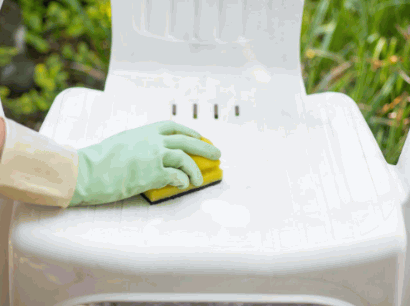
After scrubbing and cleaning your resin furniture, it is crucial to thoroughly rinse off all cleaning solutions with clean water and allow the furniture to dry completely.
Rinsing off the cleaning solutions is essential as it helps to remove any residue that may be left on the furniture. This step not only ensures that the furniture is clean but also prevents any potential chemical buildup. Using a hose or a bucket of water, thoroughly rinse the entire surface of the furniture until all soapy residues are gone.
Drying the resin furniture properly is equally important to prevent water spots and to maintain the longevity of the furniture. After rinsing, use a clean towel or cloth to wipe off excess water, making sure to dry each surface thoroughly. If possible, let the furniture air dry in a well-ventilated area to ensure all moisture evaporates.
Maintaining resin patio furniture is crucial for its longevity and appearance, and several tips and tricks can help keep it in the best condition, such as regular cleaning and proper storage.
Regular cleaning is essential to keep resin furniture free from dirt, stains, and buildup, ensuring it remains in good condition and prolongs its lifespan.
Developing a consistent cleaning schedule will help in maintaining the pristine appearance of your resin furniture. Preventive care is crucial to avoid deeper cleaning sessions later on.
Make it a habit to dust off your furniture regularly with a soft cloth or brush to prevent dust and debris from accumulating. Spills should be wiped off immediately to prevent staining. Consider giving your resin furniture a thorough cleaning at least every month, depending on usage and exposure to elements.
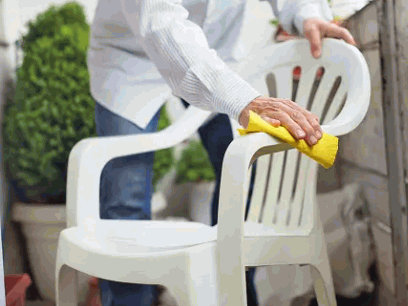
Protecting your resin furniture from the sun and harsh weather conditions can significantly extend its life and maintain its appearance, using methods such as covers and shaded areas.
Another effective way to shield resin furniture from sun damage is by applying a UV-resistant sealant or protective spray. These products create a barrier between the furniture and harmful UV rays, preventing fading and deterioration. Regularly cleaning the furniture with mild soap and water can help remove dirt and debris that can contribute to weathering. When not in use, storing resin furniture indoors or in a
can provide extra protection from the elements, prolonging its lifespan.
Properly storing resin patio furniture during the off-season is crucial to prevent damage from prolonged exposure to elements and to keep it ready for use in the next season.
Before storing resin furniture, ensure to clean it thoroughly by wiping down surfaces with a mild detergent and water solution. Allow it to dry completely to prevent mold or mildew growth during storage.
When selecting a storage location, opt for a dry and well-ventilated area to avoid moisture buildup, which can lead to warping or cracking of the furniture.
Consider investing in high-quality protective covers designed specifically for resin furniture to shield it from dust, dirt, and harsh weather conditions.
Avoiding common mistakes when cleaning resin patio furniture can help ensure effective maintenance and prevent damage, such as using harsh chemicals or abrasive tools.
One mistake to steer clear of is using bleach or ammonia-based cleaners on resin patio furniture, as these can cause discoloration or damage to the material over time.
Another key error is neglecting to regularly clean and protect the furniture from environmental elements, leading to build-up and potential deterioration.
Avoid using steel wool or abrasive brushes that can scratch and ruin the surface of the resin.
Remember, it's essential to read the manufacturer's guidelines for cleaning and maintenance to ensure the longevity of your outdoor furniture.
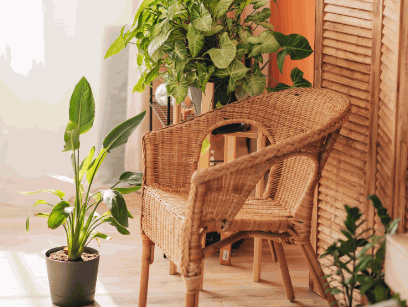
By following proper cleaning and maintenance guidelines, you can enjoy clean and well-maintained resin patio furniture that enhances your outdoor space and lasts for many years.
Regular cleaning not only keeps your resin furniture looking fresh but also helps prevent grime buildup and extend its lifespan. By wiping down surfaces regularly with a mild soap solution and warm water, you can maintain the vibrancy and shine of the furniture.
Applying a protective coating or polish can further shield the furniture from harsh outdoor elements, such as UV rays and moisture, ensuring its durability in various weather conditions.
Investing time in proper care and maintenance not only saves you money in the long run by reducing the need for replacements but also allows you to enjoy your outdoor living space to the fullest.
Table Of Contents
Are you looking to upgrade your home lighting to be more energy-efficient and cost-effective? LED recessed lighting retrofit might be the perfect solution for you!
In this comprehensive guide, we will walk you through everything you need to know about LED recessed lighting retrofit, from the different types and sizes available to a step-by-step installation guide.
We will also provide you with tips and tricks for a successful installation, as well as troubleshooting common problems you may encounter. Let's get started!
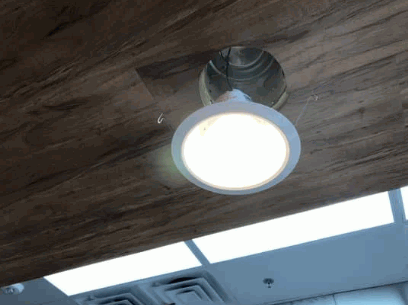
LED Recessed Lighting Retrofit involves upgrading existing recessed lighting fixtures with energy-efficient LED lights. Retrofitting helps in saving energy, reducing maintenance costs, and improving lighting quality.
LED Recessed Lighting Retrofit is gaining popularity as a cost-effective and sustainable solution for enhancing lighting efficiency in homes and commercial spaces. With traditional lighting consuming more energy and needing frequent replacements, the transition to LED lights offers significant benefits.
The key advantage of LED lights lies in their energy efficiency and long lifespan, which can result in substantial energy savings and lower maintenance expenses over time. By upgrading to LED lights through retrofitting, property owners can enjoy brighter, more consistent lighting that enhances visibility and aesthetics.
Explore: How To Retrofit Fluorescent To LED
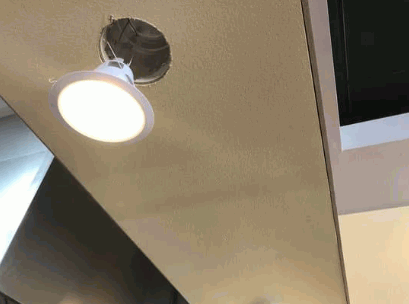
Considering LED Recessed Lighting Retrofit is essential for energy savings, improved lighting quality, and reduced maintenance costs. Hiring a professional electrician for interior lighting upgrades ensures safety and compliance.
LED recessed lighting retrofit offers numerous advantages beyond just energy efficiency. These modern lighting solutions not only consume less energy but also have a longer lifespan, reducing the need for frequent bulb changes. In addition, LED lights emit less heat, making them safer for use in various settings. The initial investment in LED retrofitting can lead to long-term cost savings due to their durability and low maintenance requirements. Professional installation is crucial to maximize the benefits of LED recessed lighting, ensuring precise placement and optimal performance.
To install LED Recessed Lighting Retrofit, you will need tools like a center punch, sheet metal screws, a right-angle drill adaptor, and materials such as LED downlights, housing clips, and brackets.
Once you have gathered all the necessary tools and materials, the first step in the installation process is to turn off the power to the existing light fixture at the breaker panel to ensure safety.

LED Recessed Lighting Retrofit comes in various types, including LED downlights, adjustable fixtures, and smart Wi-Fi-controlled lights like Philips Color LED downlights.
LED downlights offer a sleek and modern lighting solution, providing energy-efficient illumination for both residential and commercial spaces. They are versatile and can be recessed into the ceiling, creating a seamless look.
Adjustable fixtures allow for customized lighting angles, making them ideal for highlighting artwork, sculptures, or specific architectural features. These fixtures provide flexibility in directing light exactly where it's needed.
Smart Wi-Fi-controlled lights bring convenience and control to your fingertips, allowing you to adjust brightness, and color temperature, and even create schedules using a smartphone app. Syncing these lights with your home automation system can further enhance the ambiance.
LED Recessed Lighting Retrofit is available in various sizes to fit different housing configurations, from small retrofit downlights for office spaces to larger fixtures for workshop areas.
For smaller interior spaces like offices or corridors, you can opt for compact options such as 4-inch or 6-inch retrofit downlights that provide efficient illumination without overpowering the area.
On the other hand, if you have larger areas like workshops or conferencing rooms to light up, consider the bigger sizes ranging from 8-inch to 12-inch fixtures for adequate brightness coverage. These larger fixtures are designed to deliver powerful lighting suitable for spaces that require higher levels of visibility and functionality.
Installing LED Recessed Lighting Retrofit involves a systematic process, starting with turning off the power, removing the old fixture, preparing the junction box, connecting wires, securing the LED retrofit light, and installing the trim.
Before you begin the installation process, it is vital to ensure the power supply is turned off completely to prevent any electrical mishaps. Use a voltage tester to double-check that no electricity is flowing to the area you'll be working on. Once you've confirmed the power is off, carefully detach the existing fixture from the ceiling, making sure not to damage the wiring.
After removing the old fixture, inspect the junction box to ensure it's in good condition and compatible with the LED retrofit model you're installing. If necessary, make any adjustments or upgrades to the junction box before proceeding further.
The next step involves meticulously connecting the corresponding wires from the retrofit light to the electrical wiring in the junction box. Follow the manufacturer's instructions carefully to ensure the correct wiring connections, and use wire nuts to secure the connections safely.
Before beginning the installation process, ensure to turn off the power to the existing lighting fixture to prevent any electrical hazards. Use appropriate safety gear like safety glasses when working with electrical connections.
Disconnecting the power source is crucial to avoid the risk of electric shock or other accidents during installation. By shutting off the power, you create a safe working environment, reducing the chances of injury. It's a simple yet essential step that should not be overlooked.
When dealing with electrical components, always follow safety precautions to protect yourself. Safety glasses are a must to shield your eyes from any sparks or debris that may occur. They provide an extra layer of protection, ensuring your safety while working with electricity.
An electrician is trained to handle electrical systems safely and efficiently. Their expertise is invaluable in ensuring that electrical work is done correctly and safely. If you're unsure about any aspect of the installation, it's always best to consult a professional electrician for guidance.
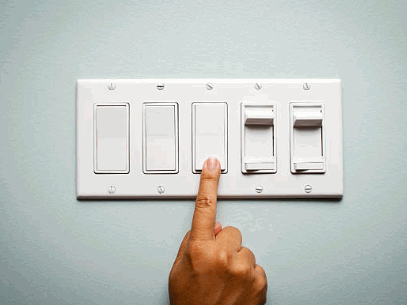
Carefully remove the old recessed lighting fixture using appropriate tools, ensuring that it does not damage the surrounding drywall. Consult with an electrician for disconnection if needed.
When beginning the process of removing the fixture, start by turning off the power source to the lighting circuit to avoid any electrical hazards. Next, use a screwdriver to carefully unscrew the screws that hold the fixture in place. Once the fixture is detached, gently pull it down. Be cautious to not put too much pressure on the drywall to prevent any cracks or damage.
Common tools needed for this task include a screwdriver, wire strippers, and a voltage tester to ensure the power is off. It's crucial to follow safety protocols throughout the removal process to prevent any accidents or injuries.
For those who are uncertain or uncomfortable handling electrical components, it's highly advised to seek professional guidance from an electrician. They can ensure the disconnection is done correctly and safely, minimizing risks of damage or injury.
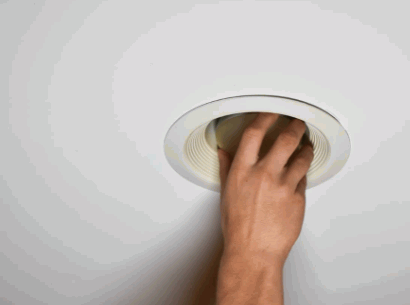
Prepare the junction box for the new LED Recessed Lighting Retrofit, ensuring proper alignment and stability using brackets. Secure the housing clips for a firm installation.
Properly preparing the junction box is crucial as it sets the foundation for a successful installation of the new LED lights. By utilizing brackets, you not only ensure correct alignment but also enhance the overall stability of the setup. Securely fastening the housing clips provides an extra layer of support, reducing the risk of any potential dislodging or movement of the lights post-installation.
Connect the wires of the LED Recessed Lighting Retrofit following the manufacturer's instructions. Use a socket adaptor for easy connectivity and ensure proper insulation of wires.
When establishing the connection for the LED Retrofit Light, it is crucial to pay close attention to the color codes specified by the manufacturer. Typically, the wires are color-coded with black for hot, white for neutral, and green or bare copper for ground. An electrician's expertise is invaluable in ensuring correct wiring, as they possess the necessary knowledge to safely and effectively handle electrical connections.
The socket adaptor plays a pivotal role in facilitating a hassle-free installation process. This adaptor allows for a seamless transition from the existing socket to accommodate the LED retrofit light, eliminating the need for complex rewiring tasks. By employing the socket adaptor, the retrofitting process becomes much more straightforward and cost-effective.
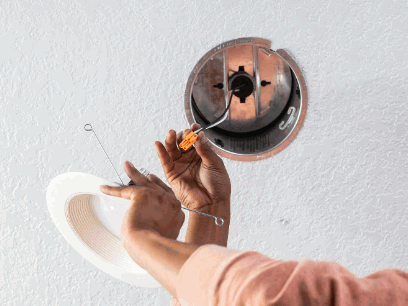
Secure the LED Retrofit Light in the housing using sheet metal screws and mark the position for accurate alignment with a sharpie. Ensure a snug fit for proper functioning.
Securing the LED Retrofit Light is crucial for ensuring optimal lighting performance. Take your time to align the light properly within the housing, as this is key to achieving the desired illumination. Using sheet metal screws provides a secure attachment that will keep the light in place for an extended period. By marking the position with a sharpie, you can easily reference the correct placement, making the installation process more efficient.
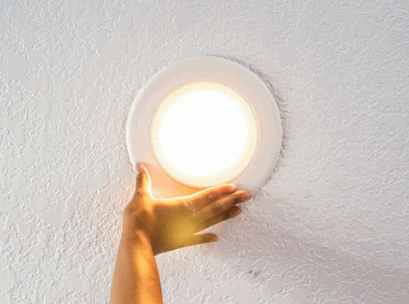
Install the trim for the LED Recessed Lighting Retrofit, using a sharpie to mark the trim outline and sandpaper for finishing touches. Ensure the trim enhances the aesthetics of the lighting fixture.
When installing the trim for your LED Recessed Lighting Retrofit, precision is key. Begin by carefully marking the trim outline with a sharpie, making sure the measurements are accurate.
Once the trim is in place, the finishing touches are crucial for a polished look. Utilizing sandpaper to smooth out any rough edges or imperfections will elevate the overall appearance of the fixture. Remember, the trim not only serves a functional purpose but also plays a significant role in enhancing the aesthetic appeal of your lighting setup.
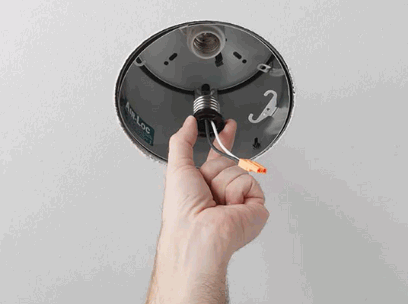
To ensure a successful LED Recessed Lighting Retrofit installation, follow these tips: Watch a video tutorial for visual guidance, use the right-angle drill adaptor for tight spaces, and wear safety gear like safety glasses and dust mask.
Before starting the installation, make sure to turn off the power to the area where you will be working to prevent any electrical accidents. It's also advisable to mark the locations for the new LED lights accurately to ensure a symmetrical layout.
Consider investing in a stud finder to locate the ceiling joists easily, which will help in securing the retrofit lights more effectively. Using a cutting template can assist in making precise cuts for installing the LED fixtures without damaging the ceiling material.
Encountering issues like light flickering, light not turning on, or insufficient brightness with LED Recessed Lighting Retrofit? Consult an electrician for professional troubleshooting guidance specific to LED downlights.
In terms of LED retrofit light installation, various common problems can arise that may require specialized knowledge to address. From compatibility issues with existing wiring to discrepancies in voltage requirements, troubleshooting these technical issues can be complex and time-consuming.
While DIY solutions may seem tempting, seeking the expertise of an electrician is crucial in resolving these issues efficiently and safely. An experienced electrician can accurately diagnose the problem and provide tailored solutions to ensure optimal performance and longevity of your LED downlights.
If you encounter light flickering after the LED Recessed Lighting Retrofit, it could indicate wiring issues or incompatible dimmer switches. Contact an electrician to assess and rectify the problem for optimal lighting performance.
Dimmer switches are designed to work with specific types of lighting, and using incompatible ones can cause compatibility issues leading to flickering lights.
Wiring problems, such as loose connections or improper installations, can also result in flickering lights post-LED retrofit.
An experienced electrician will be able to diagnose the root cause of the flickering and implement the necessary fixes to ensure your lighting operates smoothly.
If your LED Recessed Lighting does not turn on, check the power supply, wiring connections, and bulb compatibility. Seek assistance from an electrician to diagnose and fix the issue effectively.
LED lights not turning on can be due to various reasons. One common cause is a faulty power source, so ensure the outlet is working properly and the switch is on. Faulty wiring connections can hinder the electrical flow, leading to non-functioning lights. It's crucial to inspect the wiring for any damages or loose connections. Moreover, LED lights may not turn on if the bulbs are incompatible with the fixture. Using the wrong type of bulb can result in a mismatch, causing the lights to remain off. If troubleshooting these aspects doesn't solve the problem, it's advisable to reach out to a professional electrician. Electricians have the expertise to identify and resolve underlying electrical issues efficiently, ensuring your LED lights illuminate your space as intended.
If you find your LED Recessed Lighting Retrofit not bright enough, consider factors like wattage, bulb quality, or dimmer settings. Engage an electrician for proper assessment and adjustment to achieve desired brightness levels.
In terms of LED lighting, the wattage of the bulbs installed plays a crucial role in determining the brightness output. Opting for higher-wattage bulbs can significantly enhance the illumination in your space. Similarly, the quality of the bulbs used can impact the overall brightness and longevity of the lighting. Investing in high-quality LED bulbs can make a noticeable difference in the luminosity of the fixtures.
Improper dimmer settings may also contribute to dim lighting. Ensuring that the dimmer is compatible with LED bulbs and properly adjusted can help maximize brightness. Consulting with a qualified electrician is key in identifying the root cause of insufficient brightness and making the necessary adjustments to achieve optimal lighting output.
Installing LED Recessed Lighting Retrofit transforms interior spaces with energy-efficient lighting solutions. Following a detailed installation tutorial and using quality LED lights ensures a successful retrofitting project.
LED Recessed Lighting Retrofit offers a plethora of benefits beyond just illumination. These fixtures provide a modern and sleek look to the room, creating a visually appealing environment. The energy-efficient nature of LED lights not only reduces utility costs but also contributes to a greener footprint by decreasing energy consumption.
Proper installation procedures are crucial to maximize the functionality of LED lights. It ensures even distribution of light, avoiding shadowed areas and enhancing the overall ambiance of the space. By following a step-by-step tutorial, individuals can confidently undertake the retrofit process, resulting in a seamlessly integrated lighting system.
Table Of Contents
Curious about how to upgrade your fluorescent lighting to LED?
We explore the benefits of retrofitting, including energy efficiency, cost savings, and longer lifespan.
Find a step-by-step guide on how to retrofit fluorescent to LED, from determining the right fixture to installing the LED replacement.
Important factors to consider before retrofitting are compatibility and color temperature.
Discover the advantages of making the switch to LED lighting.
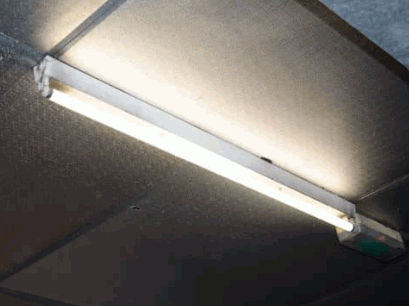
Retrofitting refers to the process of updating or replacing outdated systems with newer, more efficient technologies. In the context of lighting, retrofitting involves converting existing fluorescent fixtures to LED technology for improved performance and energy savings.
This upgrade not only enhances the quality of light output but also significantly reduces energy consumption. LED lighting is known for its longevity and durability, making it a sustainable solution for various settings. By replacing traditional fluorescent lights with advanced LED fixtures, businesses can create a more environmentally friendly workspace while simultaneously lowering electricity costs. Additionally, LED retrofitting often qualifies for energy efficiency rebates or incentives, encouraging companies to make the switch and further offset initial investment costs.

Retrofitting fluorescent lighting to LED offers numerous advantages, including energy efficiency, cost savings, and a longer lifespan. LED technology provides a more sustainable and cost-effective lighting solution compared to traditional fluorescent fixtures, especially in T8 fixtures.
LED lighting consumes significantly less energy than fluorescent lighting, leading to reduced electricity bills and a lower carbon footprint. Plus the energy savings, LED fixtures have a longer lifespan, thus reducing maintenance costs and the frequency of replacements. This switch not only benefits your wallet but also the environment, as less energy consumption means decreased greenhouse gas emissions. LED technology offers superior light quality, better color rendering, and improved flexibility in terms of customization and control, making it a smart choice for businesses and residential settings alike.
Check out: Are LED Ceiling Lights Any Good
One of the primary benefits of retrofitting fluorescent to LED is the significant improvement in energy efficiency. LED technology consumes less electricity, resulting in lower energy costs and higher energy savings for both residential and commercial properties.
LED lighting is not only energy-efficient but also environmentally friendly. By using LED tubes for lighting solutions, one can decrease their carbon footprint and contribute to a greener planet. LED lights have a longer lifespan compared to traditional lighting options, which means fewer replacements and maintenance costs in the long run.
Switching from fluorescent to LED lighting can result in substantial cost savings over time. LED retrofit kits, such as those offered by Magnilumen, provide an efficient and cost-effective way to replace traditional lighting fixtures while reducing maintenance and energy costs.
LED technology is known for its longevity, with LED bulbs lasting significantly longer than traditional fluorescent lights. This extended lifespan translates into reduced replacement and maintenance expenses, further contributing to the overall cost-effectiveness of LED retrofits. LED lighting is energy-efficient, consuming less power than fluorescent options, leading to lower electricity bills in the long run. By opting for retrofit kits like those from Magnilumen, businesses can seamlessly upgrade their lighting systems without the need for complete fixture replacements, saving both time and money.
LED lighting systems have a significantly longer lifespan compared to fluorescent fixtures, translating to reduced maintenance costs and a lower frequency of replacements.
The longevity of LED fixtures is a game-changer in the realm of lighting technology. With an average lifespan of over 50,000 hours, LED lights outlast traditional fluorescent options by a vast margin. This extended durability not only diminishes the need for frequent replacements but also minimizes the maintenance required. As a result, businesses and homeowners benefit from reduced costs and disruptions due to fewer breakdowns and replacements.
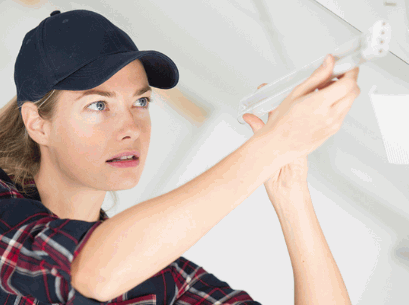
The process of retrofitting fluorescent to LED involves several key steps, starting with identifying the type of fluorescent fixture and selecting the appropriate LED replacement. Installing the new LED fixture requires removing the old fluorescent bulbs, connecting the wiring, and testing the setup for optimal performance.
Once you have identified the type of fluorescent fixtures, such as T8 fixtures, you can choose a suitable LED replacement that fits the existing housing.
In terms of wiring, ensure that the power source is turned off before beginning the installation process to avoid any electrical hazards.
Cost-effective retrofitting options include retrofit kits that make the conversion process smoother and more affordable.
By following these steps meticulously, you can upgrade your lighting system from fluorescent to LED efficiently and enjoy the benefits of energy efficiency and longevity.

Before initiating the retrofitting process, it is crucial to identify the specific type of fluorescent fixture in use. Different fixtures may require distinct LED conversion kits or retrofit solutions to ensure compatibility and optimal performance.
For instance, there are various types of fluorescent fixtures commonly found in commercial and residential settings, including T8, T12, and compact fluorescent fixtures. Each of these fixtures has unique specifications and wiring configurations that necessitate a customized approach to LED conversion.
Assessing the existing fixture is essential as it determines the type of LED retrofit kit required for a seamless installation process. Choosing the wrong kit can lead to compatibility issues, inefficient lighting, and potential safety hazards.
Selecting the appropriate LED replacement for the existing fluorescent tubes is crucial for a successful retrofitting project. Consider factors such as compatibility, lifespan, and energy efficiency when choosing between T8 LED and T8 fluorescent options.
When comparing T8 LED and T8 fluorescent options, one key factor to consider is compatibility. While T8 fluorescents can be a direct replacement for existing T8 fixtures, T8 LED tubes might require additional considerations due to their electronic components. T8 LED tubes typically offer a longer lifespan compared to T8 fluorescents, thus reducing maintenance costs and the frequency of replacements over time.
Additionally, energy efficiency plays a crucial role in the decision-making process. T8 LED tubes are known for their low energy consumption, making them an environmentally friendly choice that can lead to significant cost savings on electricity bills. On the other hand, T8 fluorescents tend to consume more power, resulting in higher energy costs in the long run.
To begin the retrofit process, carefully remove the existing fluorescent bulbs from the fixture. Ensure proper handling and disposal of the old tubes before proceeding with the installation of LED replacements, considering the available options for tube conversion.
When handling fluorescent bulbs, it is vital to take precautions to avoid breakage and exposure to harmful toxins such as mercury. Use protective gloves and eyewear to safely unscrew the tubes from the fixture.
Proper disposal is crucial; gather the old tubes in a sealed container or wrap them in newspaper before dropping them off at designated recycling centers. Alternatively, for an eco-conscious approach, consider converting the fixtures to LED tubes instead of disposing of the fluorescent ones.
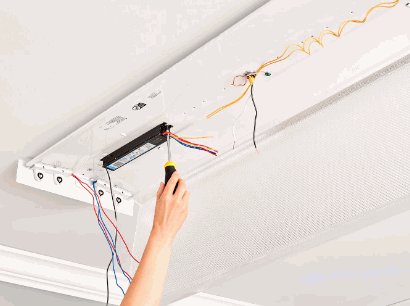
After removing the fluorescent bulbs, proceed to install the LED replacements using retrofit kits designed for quick and efficient conversion. Ensure proper alignment and fit of the LED bulbs, especially in T8 fixtures, to guarantee optimal light output and energy efficiency.
LED replacements offer numerous advantages over traditional fluorescent bulbs when used in T8 fixtures. The installation process is straightforward and can be completed without any professional assistance. LED bulbs are known for their energy efficiency, longer lifespan, and superior brightness, making them an ideal choice for both residential and commercial settings. By aligning the LED bulbs correctly within the fixtures, users can enjoy consistent and uniform illumination throughout the space, resulting in enhanced visibility and reduced energy consumption.

Connecting the wiring for the new LED fixtures is a straightforward process, typically involving matching the socket connections and securing the wiring for a reliable electrical connection. Ensure the wiring is done correctly for easy integration of LED lighting solutions.
When connecting the wiring for LED retrofitting, double-checking that the socket types match is crucial for compatibility. Ensuring a firm and secure connection between the wiring and the sockets is essential to avoid flickering or other performance issues. Always follow the manufacturer's recommendations and guidelines to guarantee a smooth installation process. This attention to detail in the wiring process not only ensures optimal performance but also contributes to the overall safety of the lighting system.
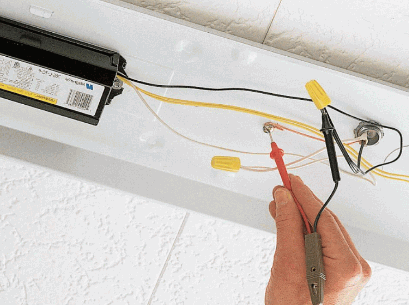
Once the LED replacements are installed and wired, it is essential to test the lighting setup to ensure proper functionality and performance. Make any necessary adjustments or modifications for optimal illumination, especially in traditional fixtures like 4ft fluorescent tubes.
Testing the LED retrofit installations is a crucial step to guarantee that the lighting is functioning as intended. To do this effectively, start by illuminating the area and observing the light output and distribution. Check for any flickering, dimming, or uneven lighting patterns that may indicate a problem.
If you encounter issues with the 4ft fluorescent tubes that have been converted, ensure that the LED replacements are securely in place and wired correctly. Adjust the position of the LEDs if needed to improve the overall brightness and consistency of the lighting.
It is also recommended to compare the new LED lighting with existing fixtures to determine if any adjustments are required for uniformity. By carefully testing and adjusting the installation, you can achieve optimal performance and lighting quality in your space.
Before embarking on a retrofitting project, it is essential to consider factors such as fixture compatibility, color temperature preferences, lumens output, and wattage requirements. These considerations ensure a successful transition from fluorescent to LED lighting.
Fixture compatibility is crucial, as LED bulbs come in various shapes and sizes, requiring compatible fixtures to function efficiently.
When selecting color temperature preferences, consider whether you prefer a warmer or cooler light tone to suit the ambiance.
Determining the necessary lumens output ensures proper brightness levels for the specific area being illuminated while gauging the adequate wattage requirements is essential for energy efficiency and cost-effectiveness.
When planning a retrofit from fluorescent to LED, ensuring compatibility between the existing fixtures and the new LED solutions is crucial. Verify that the sockets, wiring, and mounting options align to facilitate a smooth installation process without compatibility issues.
Socket compatibility plays a vital role, as different types of sockets may be required for LED replacements. It is essential to confirm that the sockets in the current fixtures are suitable for the new LED bulbs.
Checking the wiring alignment is key to avoid any electrical issues during installation. Ensuring that the wiring can support the power requirements of the LED bulbs is essential for proper functioning.
Examining the mounting options is equally important, as LED fixtures may have different mounting mechanisms. Ensuring that the existing fixtures can accommodate the new mounting styles can prevent complications during the installation process.
Selecting the appropriate color temperature for LED replacements is essential for achieving the desired lighting ambiance and visual comfort. Consider factors like lumens output and wattage equivalents to match the color temperature preferences during the retrofit process.
Color temperature plays a crucial role in setting the mood and overall feel of a space. Warm white tones, around 2700-3000K, create a cozy and inviting atmosphere perfect for residential areas like living rooms and bedrooms. On the other hand, cool white tones, approximately 4000-5000K, are ideal for task-oriented spaces such as offices and kitchens, providing a bright and stimulating environment.
When upgrading to LED lighting, it's important to balance the lumens output to ensure sufficient brightness without causing glare or discomfort. Higher lumens correspond to brighter light, so selecting the right output based on the room's size and function is crucial. Similarly, understanding the wattage equivalents of traditional incandescent or fluorescent bulbs can help in choosing energy-efficient LED replacements that maintain the desired brightness levels while reducing energy consumption.
Understanding the relationship between lumens and wattage is essential when retrofitting to LED lighting. Higher lumens output with lower wattage consumption translates to energy savings and improved lighting performance, making it a key consideration for retrofit projects.
When transitioning to LED lighting, it's crucial to focus on achieving the right balance between brightness and energy efficiency. Opting for bulbs with higher lumens and lower wattage not only results in cost savings over time but also contributes to a more sustainable environment. By selecting bulbs with optimal lumens-to-wattage ratios, users can ensure that they are maximizing the benefits of LED technology while minimizing their energy consumption.
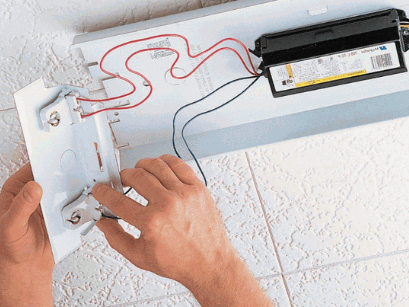
Retrofitting from fluorescent to LED offers a range of benefits, including energy savings, enhanced lighting quality, reduced maintenance costs, and environmental advantages. Upgrading to LED fixtures aligns with energy-efficient practices and contributes to sustainable lighting solutions.
LED lighting systems are known for their remarkable energy efficiency, significantly lowering electricity usage and utility bills while lasting much longer than traditional lighting sources. The improved illumination from LED technology provides a more vibrant and visually appealing environment, enhancing productivity and comfort for individuals in various settings. The long lifespan of LEDs reduces the frequency of replacements, diminishing maintenance expenses over time.
Transitioning to LED not only brings about financial benefits but also has a positive impact on the environment. With LED's eco-friendly nature, there is a significant reduction in energy consumption, lessening carbon footprints and helping create a more sustainable future. By embracing LED lighting solutions, businesses and households can play a vital role in promoting greener practices that benefit both the present and future generations.
One of the primary benefits of retrofitting to LED is the significant energy savings achieved through reduced electricity consumption and extended lamp life. LED retrofit projects may qualify for utility rebates, enhancing the overall cost-effectiveness of the transition.
Reduced energy consumption not only leads to immediate cost savings but also contributes to a more sustainable environment by lowering carbon emissions. The extended lamp life of LEDs minimizes maintenance costs and reduces replacement frequency, resulting in long-term efficiency gains.
LED retrofits enhance lighting quality by providing superior brightness and lumen output compared to traditional fluorescent fixtures. Features like ballast bypass options further improve light consistency and performance, offering customizable lighting solutions for various applications.
These retrofits not only increase the overall luminance but also contribute to energy efficiency and reduced maintenance costs, making them a cost-effective lighting solution for businesses and homes alike. The improved illumination provided by LED retrofits creates a more vibrant and welcoming atmosphere in commercial spaces, enhancing productivity and customer experience. With the ability to adjust the light output and color temperature, users can tailor the lighting to suit different settings, whether it's a bright, focused light for retail environments or soft, ambient lighting for hospitality venues.
Transitioning to LED lighting through retrofit projects reduces maintenance costs by minimizing the frequency of bulb replacements and optimizing the efficiency of lighting systems. Commercial properties can benefit from this cost-effective option while exploring utility rebate paths for additional savings.
LED retrofitting not only decreases the need for constant bulb changes but also enhances the overall performance of the lighting setup, which in turn leads to lower utility bills for commercial buildings. By upgrading to energy-efficient LED technology, businesses can significantly cut down on maintenance expenditures and allocate those funds to other aspects of their operations. Many utility companies offer rebates or incentives to encourage the switch to eco-friendly lighting solutions, providing an extra layer of cost savings for forward-thinking property owners.
Retrofitting to LED contributes to environmental benefits by reducing energy consumption, minimizing waste from discarded fluorescent tubes, and aligning with sustainable lighting goals. Businesses can allocate a portion of their budget to retrofit projects, promoting eco-friendly practices within their premises.
Transitioning to LED lighting not only supports a greener environment but also offers long-term cost savings through lower energy usage and reduced maintenance costs. The durability and longevity of LED lights mean fewer replacements, further cutting down on waste generation.
By investing in LED retrofit initiatives, companies not only enhance their energy efficiency but also showcase their commitment to sustainability. This strategic allocation of resources toward eco-conscious lighting solutions not only benefits the environment but also demonstrates corporate responsibility, setting a positive example for others.
Table Of Contents
LED ceiling lights have become increasingly popular for their energy efficiency, long lifespan, and environmentally friendly benefits.
We explore the different types of LED ceiling lights, how they work, and the advantages they offer over traditional lighting options.
We discuss any potential drawbacks of using LED ceiling lights and compare them to other types of lighting.
We provide guidance on factors to consider when choosing LED ceiling lights, such as lumens, color temperature, and dimmability.
Join us as we shed light on the world of LED ceiling lights.

LED Ceiling Lights are modern fixtures that provide energy-efficient lighting solutions for rooms. These lights come in various designs and sizes to suit different room aesthetics and lighting needs.
Regarding integrated LED ceiling lights, the LED technology is built directly into the fixture, ensuring a long lifespan and low maintenance. On the other hand, replaceable LED bulbs offer the flexibility to easily change the lighting intensity or color temperature.
It's essential to consider the size of the room when selecting LED ceiling lights to ensure proper lighting distribution and balance. Whether you prefer a sleek and minimalist look or a statement piece, there are LED fixtures available to complement any room's aesthetic.
Take a look: How To Install LED Recessed Lighting Retrofit

LED Ceiling Lights come in two main types: integrated fixtures and replaceable bulbs. Integrated LED lights are fixtures where the LEDs are built into the fixture itself, offering a sleek and modern design. On the other hand, replaceable LED bulbs allow for easy replacement and customization of the light output.
Integrated LED ceiling lights, due to their all-in-one design, eliminate the need for separate drivers or technical installations, making them hassle-free to set up. Their advanced engineering ensures optimal light distribution and enhances the ambiance of any space.
Longevity is a key advantage, with integrated LEDs often lasting significantly longer than traditional bulbs, saving on maintenance costs and reducing the need for frequent replacements. These lights are highly energy-efficient, consuming less power while providing bright illumination.
LED Ceiling Lights work by using light-emitting diodes (LEDs) to produce illumination. These lights are designed to be energy-efficient and provide a balance of ambience and functionality in modern homes.
LED Ceiling Lights have gained popularity not just for their efficiency but also for their remarkable durability. The technology behind LEDs allows these lights to last significantly longer than traditional lighting options, reducing the need for frequent replacements and maintenance. The heat dissipation mechanism in LED ceiling lights ensures that they remain cool to the touch even after prolonged use, making them safe and ideal for various settings. This feature also contributes to their longevity and lower energy consumption, further emphasizing their sustainability.

LED Ceiling Lights offer numerous benefits, including energy efficiency, long lifespan, sustainability, and cost savings. These lights are designed to reduce energy bills and provide reliable lighting solutions.
With their energy-efficient technology, LED ceiling lights consume significantly less electricity compared to traditional lighting options, making them an environmentally friendly choice. The long lifespan of LED lights means fewer replacements, reducing maintenance costs and saving you time and hassle. The sustainability of LED lights lies in their recyclability and absence of hazardous materials, contributing to a greener planet. This remarkable cost-saving attribute not only benefits your wallet but also the environment by reducing overall energy consumption.
One of the key benefits of LED Ceiling Lights is their energy efficiency. These lights consume less power compared to traditional lighting solutions, leading to reduced energy consumption and lower electricity bills.
LED ceiling lights have a longer lifespan, which means less frequent replacements, reducing maintenance costs as well. The environmental impact of LED lights is also significant, as they produce less heat and contain no hazardous materials, making them eco-friendly options. This translates into a positive contribution towards sustainability by reducing the carbon footprint and overall energy waste. When compared to incandescent or fluorescent lighting, LED ceiling lights stand out as a more cost-effective and environmentally-conscious choice.
LED Ceiling Lights have a significantly longer lifespan compared to traditional bulbs. The average lifespan of LED lights is often expressed as the L70 rating, indicating the time taken for the light output to degrade to 70% of its original level.
One of the key benefits of this extended lifespan is the reduced frequency of replacements required, saving homeowners both time and money in the long run. LED lights are known for their durability, attributed to factors such as their solid-state construction that is less prone to breakage compared to fragile filaments in incandescent bulbs. The efficient energy usage of LEDs contributes to their longevity as they generate less heat, reducing stress on internal components and ensuring a more stable performance over time.
LED Ceiling Lights are environmentally friendly lighting options due to their lower energy consumption and reduced carbon footprint. These lights contribute to sustainability efforts by minimizing greenhouse gas emissions.
The longevity of LED lights plays a crucial role in reducing waste as they have a significantly longer lifespan compared to traditional lighting sources. This means less frequent replacements and ultimately less material ending up in landfills. LED lights do not contain hazardous materials like mercury, making them safer for the environment during disposal.
Using LED Ceiling Lights can lead to substantial cost savings over time. While the initial investment may be higher, the long-term benefits in terms of energy savings and reduced maintenance costs make LED lights a cost-effective lighting solution.
The financial advantages of using LED ceiling lights are multifaceted. These lights are known for their energy efficiency, consuming significantly less power compared to traditional incandescent or fluorescent bulbs. This reduced energy consumption translates directly into lower electricity bills, providing users with ongoing savings. LED lights have a longer lifespan, requiring less frequent replacements and maintenance, which further reduces operating costs over time.
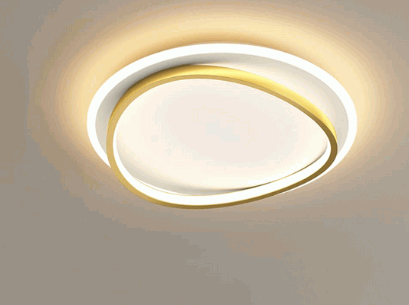
Despite their numerous benefits, LED Ceiling Lights also have certain drawbacks that need to be considered. These drawbacks include a potentially higher upfront cost, limited color options, and the occasional issue of flickering.
When installing LED ceiling lights in rooms with high ceilings, the initial expense can be a barrier for many homeowners. While the long-term energy savings are attractive, the upfront investment required is often more than traditional lighting options.
The color choices available with LED lights are somewhat limited compared to traditional lighting sources such as incandescent bulbs. This can be a drawback for individuals who prefer a wider range of hues to match their specific decor preferences.
Another concern that some may encounter is the occasional problem of flickering in LED ceiling lights. This issue can be frustrating and may require replacement of the fixture or professional assistance to rectify.
While LED technology has come a long way in recent years, some users still find that certain styles of LED ceiling lights do not match the aesthetic they are seeking for their space.
One of the main drawbacks of LED Ceiling Lights is the higher upfront cost compared to traditional lighting options. This initial investment is offset by long-term cost savings and energy efficiency benefits.
LED ceiling lights may require a higher initial outlay, but their cost-effectiveness over time cannot be overlooked. In terms of appliance longevity, LEDs outshine their traditional counterparts by a long shot, offering exceptional durability and reliability. This means fewer instances of replacement and maintenance, translating to reduced expenses in the long run. While the upfront costs may dissuade some buyers initially, the durability of LED lights ensures that the investment pays off in the form of extended lifespan and decreased energy consumption.
LED Ceiling Lights may have limited color options compared to traditional lighting sources. While LEDs offer a wide range of color temperatures, customization options for specific hues or tones might be restricted.
When considering LED ceiling lights, it's essential to delve into the available color temperatures to ensure the desired ambiance is achieved. The measurements and dimensions of a room also play a crucial role in determining which color temperature is suitable. While customization possibilities for color hues may be constrained, the impact on room aesthetics can still be significant. Aesthetics are influenced not only by the color temperature but also by the distribution of light and the design of the fixture itself.
One drawback of LED Ceiling Lights is the potential for flickering, which can be due to issues with the driver or incompatible dimmer switches. Addressing this concern often requires technical troubleshooting to ensure a stable lighting performance.
Flickering in LED ceiling lights can disrupt the balance and ambience of a room, affecting both functionality and aesthetics. Common causes of flickering include improper wiring, voltage fluctuations, or a mismatch between the dimmer switch and the LED fixture. To tackle this issue, it's essential to check for loose connections, replace faulty components, or consider using a compatible dimmer switch.
Proper installation of LED ceiling lights, such as ensuring a secure flush mount, is crucial to prevent flickering issues. Regular maintenance, like cleaning dust off the fixture and checking for any signs of wear, can also help maintain optimal performance.
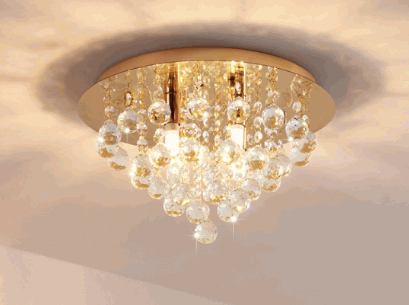
When compared to other types of lighting such as incandescent, CFL, and halogen lights, LED Ceiling Lights stand out for their energy efficiency, longevity, and overall performance. These lights offer a balance of functionality and aesthetics in modern homes.
One of the key advantages of LED ceiling lights is their minimal energy consumption, making them an excellent choice for those looking to reduce electricity bills and minimize their environmental impact.
These lights are known for their superior durability, requiring less frequent replacement compared to traditional lighting options. Moreover, LED fixtures are designed to efficiently dissipate heat, ensuring a longer lifespan and maintaining a cool environment.
The design versatility of LED ceiling lights allows for various shapes, sizes, and color temperatures, enabling homeowners to customize their lighting preferences to suit different spaces and moods.
In comparison to incandescent lights, LED Ceiling Lights are far more energy-efficient and have a significantly longer lifespan. While incandescent lights may offer a warmer color tone, LED lights excel in terms of sustainability and reduced energy consumption.
LED lights not only save on energy costs but also contribute to environmental preservation. The efficiency of LED technology translates into cost savings over the long term, making them a smart investment for households and businesses alike. LEDs are also known for their dimmability, providing users the flexibility to adjust lighting levels according to their preferences and needs.
One of the key factors that differentiate LED and incandescent lights is their color temperature. LED lights can offer a range of color temperatures, from warm to cool hues, allowing users to create different atmospheres and moods with their lighting choices. On the other hand, incandescent lights tend to emit a consistently warm color, which may not be suitable for all environments.
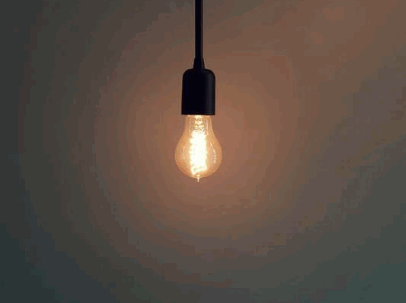
Compared to CFL lights, LED Ceiling Lights are more energy-efficient, contain no mercury, and offer a wider range of color temperatures. LED lights also have instant brightness without any warm-up time, making them a preferred choice for many consumers.
LED lights typically have a longer lifespan than CFL lights, providing up to 50,000 hours of illumination compared to CFLs which last around 10,000 hours. LEDs are more durable because they are made of solid material and are less prone to breakage, making them ideal for various environments.
Regarding brightness, LEDs emit light in a specific direction, thanks to their narrow beam angle, which helps in directing light exactly where it's needed, reducing wasted light. The range of lumens offered by LED lights allows for greater customization in terms of brightness levels, catering to individual preferences and requirements.
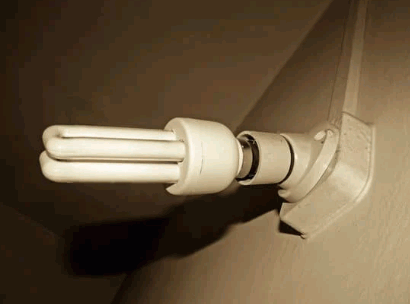
When contrasted with halogen lights, LED Ceiling Lights offer superior energy efficiency, longer lifespan, and better light quality. Halogen lights are known for their heat output and higher energy consumption, making LED lights a more sustainable and cost-effective choice.
LED ceiling lights also have a wider range of brightness options and can be dimmed efficiently, providing adjustable lighting to suit various preferences and moods. The beam angle of LED lights is typically broader, ensuring more uniform illumination across a room compared to the directional light of halogen bulbs. LED ceiling lights are renowned for their durability and shock resistance, making them ideal for long-term use without the need for frequent replacements.
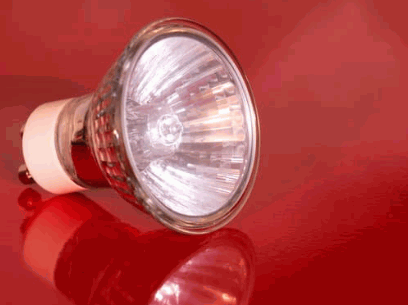
Several factors should be considered when selecting LED Ceiling Lights for a space. These include lumens and brightness levels, color temperature preferences, dimmability options, and the beam angle required for adequate lighting coverage.
When choosing LED ceiling lights, it's crucial to pay attention to the color temperature to create the desired ambiance. Whether you prefer warm or cool tones, selecting the right color temperature can significantly impact the overall mood of the room. Considering the dimmability of the lights allows for adjusting the intensity to suit different occasions or activities. The beam angle plays a vital role in determining the coverage area and focus of the lighting, ensuring efficient illumination across the space.
The brightness of LED Ceiling Lights is measured in lumens, which indicate the light output of the fixture. Understanding the lumens required for a specific room size helps in selecting the appropriate lighting level for optimal illumination.
When choosing LED ceiling lights, it's essential to consider the room size to ensure proper brightness levels. Different rooms have varying lighting needs - for example, a small bedroom may require fewer lumens than a large living room.
Ensuring the right amount of lumens not only impacts the brightness but also the overall ambiance of the space. LED lights with higher lumens provide a brighter light, creating a more inviting and well-lit environment.
Color temperature plays a crucial role in the ambiance of a room. LED Ceiling Lights offer a range of color temperatures from warm white to cool daylight, allowing users to customize the lighting ambiance based on their preferences.
Choosing the right color temperature can significantly impact the overall aesthetics of a space. Warm white tones create a cozy and inviting atmosphere, perfect for living rooms and bedrooms, while cooler daylight hues are ideal for task-oriented areas such as kitchens and home offices.
Aesthetically, achieving a proper balance of lighting tones is key in creating a harmonious and visually appealing environment, especially in modern homes. LED lights, with their flexibility in color temperature settings, provide a versatile solution for achieving this desired balance.
Dimmable LED Ceiling Lights provide users with the flexibility to adjust the light intensity based on the desired ambiance. Incorporating dimmable features in LED lights enhances the overall functionality and mood-setting capabilities of the fixtures.
Users appreciate the ability to create different atmospheres in their living spaces without having to rely on fixed lighting levels. Whether you want soft, ambient lighting for a cozy evening at home or bright, focused illumination for reading or working, dimmable LED ceiling lights offer a versatile solution. This not only adds a touch of personalization to the environment but also contributes to energy savings by allowing users to adjust the brightness according to their needs. The dimmable feature significantly impacts the overall ambience of a room by allowing for customization based on specific preferences.
The beam angle of LED Ceiling Lights determines the spread of light and coverage area. Selecting the appropriate beam angle ensures uniform illumination across the room, making it essential to consider the desired light distribution for optimal lighting results.
With a narrow beam angle, the light is focused in a specific direction, making it ideal for accent lighting or highlighting certain features in a room. On the other hand, a wide beam angle spreads the light over a larger area, perfect for general ambient lighting. The angle of the beam also affects the visual perception of space; a tight beam angle can create dramatic shadows and highlights, while a wider beam angle offers a more even and well-lit environment.
Table Of Contents
Are you noticing water pooling at the bottom of your dishwasher or a funky smell emanating from it? It might be time to clean the drain of your dishwasher.
This guide will discuss why it is important to clean the dishwasher drain, the signs that indicate it needs cleaning, the materials required, and a step-by-step process to effectively clean the drain.
We will also explore how often the dishwasher drain should be cleaned, alternative methods for cleaning, and tips to prevent future clogs. Let's ensure your dishwasher runs smoothly and efficiently!
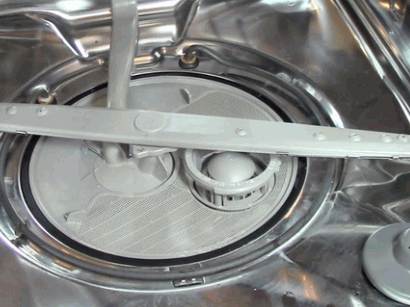
Cleaning the drain of a dishwasher is crucial to prevent clogs, maintain optimal performance, and ensure the longevity of your appliance. Over time, food particles, grease, and debris can accumulate in the drain, leading to blockages that may hinder the proper drainage of water during the dishwasher's cycles. Regular cleaning also helps in eliminating foul odors and maintaining a hygienic environment in your kitchen.
By regularly cleaning the dishwasher drain, you not only prevent potential clogs but also enhance the overall efficiency of your appliance. A clogged drain can disrupt the flow of water, affecting the cleanliness of your dishes and even causing leaks in severe cases. Ensuring a clear drain allows the dishwasher to function as intended, providing you with sparkling clean dishes every time.
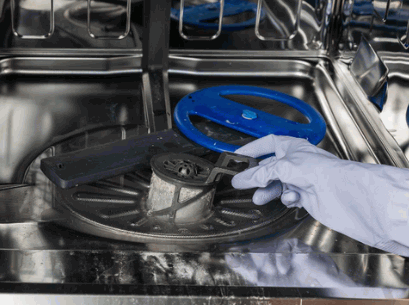
Several signs indicate that your dishwasher drain requires cleaning, such as slow or incomplete drainage after a cycle, pooling water at the bottom of the appliance, persistent odors emanating from the dishwasher, and gurgling or unusual noises during operation. A visible backup of water in the sink connected to the dishwasher or the presence of debris in the drain filter are clear indicators of a clogged dishwasher drain.
Another common sign of a clogged dishwasher drain is when water backs up into the sink while the dishwasher is running, indicating a blockage in the drainage system. The air gap, a small cylindrical device located on the sink, can also provide clues; for instance, if it overflows during the dishwasher cycle, this suggests a problem with the drainage.
To effectively clean the drain of a dishwasher, you will need basic household items such as white vinegar, baking soda, a soft brush or cloth for scrubbing, the dishwasher's manual for guidance on accessing the drain components, specialized dishwasher cleaning products, and dishwashing liquid for a thorough rinse and final cleaning step.
White vinegar, often hailed for its natural cleaning prowess, serves as a potent disinfectant that can help eliminate stubborn grime and odors within the drain.
When combined with baking soda, a versatile cleaning agent with gentle abrasive properties, a fizzy reaction occurs, aiding in the dislodging of debris and grease buildup.
A soft brush or cloth is essential for physically scrubbing away any remaining residue or particles that may cling to the drain walls.
The dishwasher's manual is your ultimate resource for understanding the specific layout of your appliance's drain system and how to safely clean it.
Specialized dishwasher cleaning products are formulated to target and break down tough stains and mineral deposits, ensuring a thorough cleansing process.
For the final step, using dishwashing liquid helps remove any leftover cleaning agents and leaves the dishwasher smelling fresh and ready for use.
Cleaning the drain of your dishwasher involves a series of steps to ensure the thorough removal of debris, clogs, and buildup. From removing the bottom rack to accessing the drain components, using vinegar and baking soda solution for cleaning, and checking the drain hose for any obstructions, each step plays a crucial role in maintaining a clean and functional dishwasher drain.
Once you have removed the bottom rack, inspect the drain area for any visible debris or clogs. Use a soft-bristle brush or a toothbrush to gently scrub away any residue.
Next, locate the filter in your dishwasher and remove it carefully. Clean the filter under running water to wash away any trapped food particles. For a deep clean, soak the filter in a vinegar and water solution to break down oils and grease.
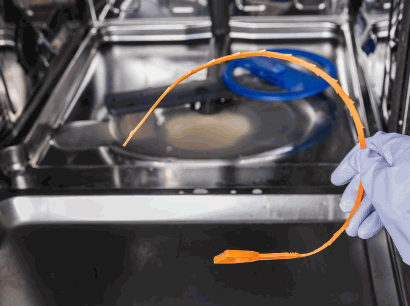
The first step in cleaning a dishwasher drain is to remove the bottom rack to access the drain area easily. Pull the rack outward gently, ensuring it is empty of any dishes or utensils, and set it aside for cleaning separately.
Once you have removed the bottom rack, it's essential to inspect it for any food particles or debris that may have accumulated. Use a damp cloth or sponge to wipe down the rack, paying special attention to any corners or crevices where grime tends to build up.
Before cleaning the rack, ensure that your dishwasher is unplugged to prevent any accidents. You may also want to wear protective gloves to avoid any sharp edges on the rack causing injury. When handling the rack, be mindful of any fragile parts and avoid applying excessive force to prevent damage.
After removing the bottom rack, locate the dishwasher drain and inspect it for any visible debris or clogs. Use a flashlight for better visibility and a tool such as a soft brush or cloth to gently remove the accumulated debris without damaging the drain components.
Proper lighting is crucial during this inspection process as it helps you identify even the smallest debris that might be causing drainage issues in your dishwasher.
Taking your time to carefully clean the drain ensures that you do not inadvertently push the debris further into the system, potentially worsening the clog.
When inspecting the drain, pay attention to any food particles, soap scum, or mineral buildup that could be obstructing the flow of water.
Remember to always handle the drain and its components delicately to avoid causing any damage that might lead to costly repairs in the future.
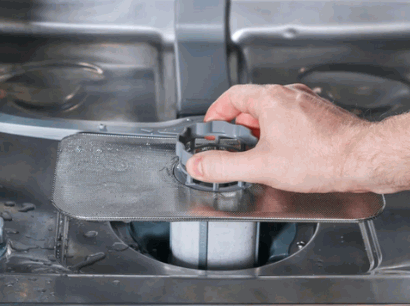
To effectively clean the dishwasher drain, create a solution of white vinegar and baking soda. Pour the vinegar into the drain, followed by baking soda, and allow the mixture to fizz and break down residue and odor-causing particles for about 15-20 minutes.
This simple cleaning method harnesses the power of a chemical reaction between the vinegar and baking soda. When these two ingredients interact, they create a bubbling effect that helps dislodge stubborn debris clinging to the drain walls. Plus breaking down grime, this fizzy reaction releases carbon dioxide gas which further aids in pushing out dirt and eliminating unpleasant smells. The recommended duration of 15-20 minutes gives ample time for the mixture to work its magic, thoroughly cleansing the drain. Remember to run a hot water rinse cycle after to complete the process.
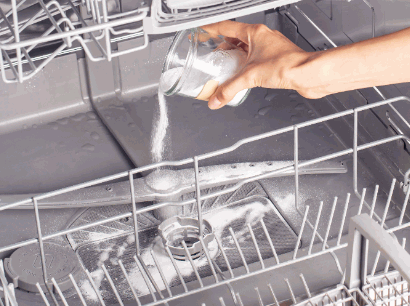
After the vinegar and baking soda solution have had time to work on the drain, rinse the drain thoroughly with hot water to flush out loosened debris and residue. This step helps in ensuring that the drain is free of any remaining particles and cleaning solution.
Using hot water is crucial in this step as it helps to dissolve and remove any stubborn residues that have been loosened by the vinegar and baking soda mixture. The hot water not only aids in rinsing away the debris effectively but also ensures that no traces of the cleaning agents are left behind. When rinsing, make sure to allow the hot water to flow through the drain at a steady pace, thoroughly cleaning all areas.
Next, locate and remove the dishwasher filter for cleaning. Inspect the filter for any debris or blockages, and wash it under running water to remove trapped particles. Ensure the filter is completely clean before reinserting it back into the dishwasher.
Proper maintenance of the dishwasher filter is essential for the efficient functioning of your appliance. Debris and food particles can accumulate over time, causing drainage issues and affecting the cleanliness of your dishes. By regularly inspecting and cleaning the filter, you can prevent potential clogs and ensure that your dishwasher continues to work effectively.
Avoid using harsh chemicals or abrasive scrubbing pads when cleaning the dishwasher filter, as these can damage its delicate mesh structure. A gentle scrub with a soft brush or sponge should suffice to remove any stubborn residues. Check the manufacturer's instructions for specific cleaning recommendations tailored to your dishwasher model.
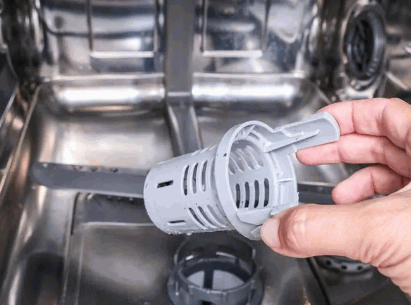
Inspect the dishwasher drain hose for any clogs or kinks that may obstruct the flow of water. Carefully straighten out any kinks and remove any visible clogs to ensure smooth drainage during the dishwasher's operation.
Check for debris accumulation at the connection points between the hose and the dishwasher or garbage disposal. Use a flashlight to look inside the hose for any blockages, such as food particles, grease, or small objects. It's advisable to detach the hose and clean it out if necessary, ensuring there are no stubborn blockages impeding the water flow. Running hot water through the hose after cleaning can help clear out any residual debris and maintain a clear pathway for efficient drainage.
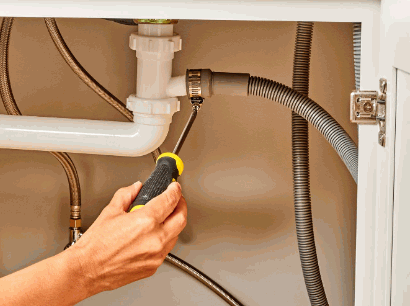
Once the drain components are clean and free of debris, reassemble the dishwasher by replacing the filter, rack, and any removed parts. Run a test cycle with the dishwasher empty to ensure that the drain functions properly and there are no leaks or drainage issues.
Proper maintenance of your dishwasher is crucial to ensure its efficient performance. Reassembling the machine correctly after cleaning the drain components is essential to prevent any future problems. Make sure the filter is secure in place, and the rack fits back perfectly. Running a test cycle post-cleaning allows you to observe the dishwasher's functionality firsthand. Monitor any unusual sounds or water leakage during this process. It's advisable to perform regular maintenance routines to extend the lifespan of your dishwasher.
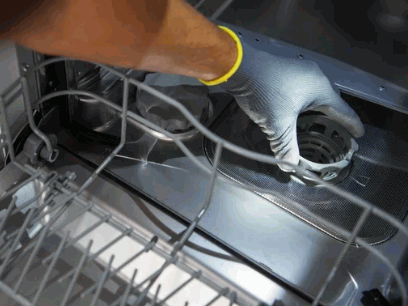
It is recommended to clean the dishwasher drain at least once a month or more frequently if you notice signs of drainage issues or unpleasant odors. Regular maintenance of the dishwasher drain helps prevent clogs, maintain optimal performance, and extend the lifespan of the appliance.
Plus preventing clogs and maintaining optimal performance, regular cleaning of the dishwasher drain also helps in avoiding bacterial buildup and ensuring hygienic dishwashing. By cleaning the drain on a monthly basis, you can significantly reduce the risk of mold growth and foul odors in your dishwasher.
To identify if your dishwasher drain needs cleaning, inspect it for any visible debris or standing water after a cycle. If you notice slow drainage or hear unusual noises during operation, it might indicate a clog that needs attention.
Apart from using vinegar and baking soda, there are alternative methods to clean the dishwasher drain. You can opt for commercial dishwasher cleaners designed specifically for drain maintenance, utilize a plunger to dislodge stubborn clogs, or manually clean the drain pipe using a pipe brush and hot water to ensure thorough cleaning.
Commercial dishwasher cleaners are easily available in the market and are formulated to break down grease and grime that accumulate in the drain over time. They offer a convenient solution for those looking for a quick and effective fix.
On the other hand, plungers can be a simple yet powerful tool to tackle blockages by creating pressure to push through the clogs.
For a more hands-on approach, manual cleaning with a pipe brush and hot water allows you to physically remove any buildup along the drain pipe walls. This method ensures a comprehensive clean, particularly in hard-to-reach areas that may be missed by other cleaning techniques.
Commercial dishwasher cleaners offer a convenient solution for deep cleaning the dishwasher drain. These specialized products are formulated to break down tough residues, eliminate odors, and maintain the cleanliness of the drain system effectively. Follow the manufacturer's instructions for the proper use of the commercial cleaner for optimal results.
Using a commercial dishwasher cleaner not only removes grease buildup but also prevents clogs and ensures your dishwasher functions efficiently. By regularly cleaning the drain with a commercial cleaner, you can extend the lifespan of your dishwasher and improve its overall performance. These cleaners are designed to be safe for use in dishwashers and are effective in preventing mold and mildew growth in the drain system. Always check the product label for specific guidelines on application and dosage to achieve the best results.
Explore further: What Is The Best Kitchen Drain Unblocker
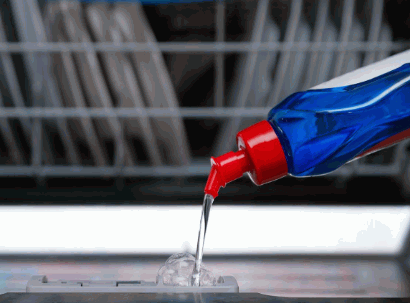
In case of persistent clogs in the dishwasher drain, using a plunger can help dislodge blockages and restore proper drainage.
When tackling a clog in your dishwasher drain, it's important to first ensure that the plunger's cup completely covers the drain opening. This tight seal is crucial in creating the necessary suction force to dislodge the blockage efficiently.
Once the seal is formed, gently push down on the plunger handle and then pull up in a pumping motion. This action helps to create pressure within the drain, breaking up the debris causing the clog. Remember to maintain a firm grip on the plunger and avoid using excessive force to prevent damage.
If the clog persists after the initial attempt, repeat the plunging process several times. Patience and consistent pressure are key in effectively clearing stubborn blockages in the dishwasher drain.
To prevent future clogs in the dishwasher drain, incorporate regular maintenance and cleaning practices into your routine. Avoid rinsing excess food particles down the drain, use a mesh filter to catch debris, run hot water periodically to flush the drain, and ensure the air gap is clear to facilitate proper drainage and prevent backups.
Be cautious with what goes into your dishwasher; scraping off plates before loading them can significantly decrease the chances of clogs.
Regularly inspect and clean the filter to ensure it is free from blockages.
Consider using a dishwasher cleaning solution periodically to prevent the buildup of grease and soap scum.
Implementing these preventive measures not only keeps your dishwasher running smoothly but also extends its lifespan and ensures efficient performance.
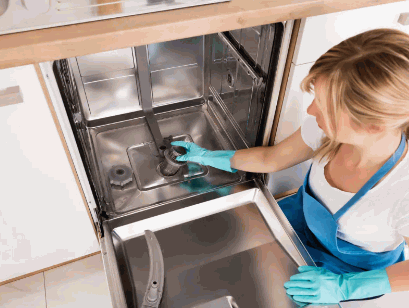
Table Of Contents
Are you tired of dealing with a clogged kitchen drain?
In this article, we will explore the world of kitchen drain unblockers. From how they work to the different types available, we will cover everything you need to know.
Discover the best kitchen drain unblockers on the market, along with tips on how to use them effectively. We will also discuss alternative methods for unclogging kitchen drains and precautions to keep in mind.
Say goodbye to stubborn clogs with our comprehensive guide!
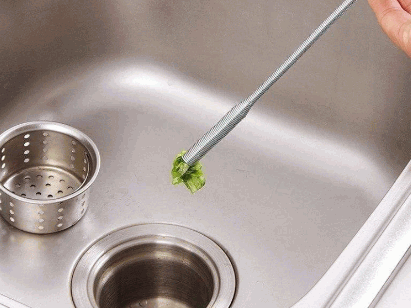
A kitchen drain unblocker is a specialized product designed to remove clogs and blockages in kitchen sinks, ensuring smooth water flow and proper drainage. These unblockers are essential for maintaining the plumbing system and preventing issues caused by accumulated debris and grease.
In terms of maintaining a functional kitchen environment, kitchen drain unblockers play a crucial role in avoiding the inconvenience of a clogged sink. By efficiently breaking down organic matter, grease, and soap scum that often causes blockages, these products help prevent water backups and foul odors in your kitchen. Regular use of quality drain unblockers not only keeps your sink free from blockages but also extends the lifespan of your plumbing system by minimizing the risk of more severe clogging issues.
Dig deeper: How To Clean Drain In Sink
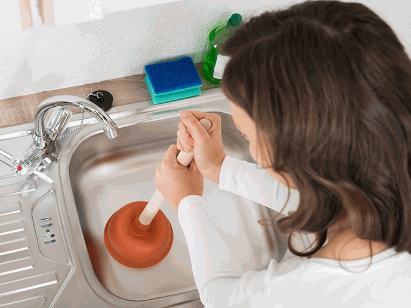
Kitchen drain unblockers work by breaking down and dissolving various substances that cause clogs, such as grease, hair, and food particles, in the pipes of the plumbing system. These products use chemical or mechanical means to unclog drains effectively and restore proper water flow.
When kitchen drain unblockers come into contact with the clog-causing materials, they initiate a process that breaks down the blockage, allowing it to be easily flushed away. The chemical drain cleaners contain powerful agents that react with the substances, while the mechanical uncloggers utilize tools such as augers or plungers to physically dislodge the obstruction.
By targeting and dissolving these key culprits of clogs, including grease, hair, and food particles, these drain unblockers efficiently clear the passageways within the plumbing system. This action promotes smooth water flow and helps prevent future blockages from occurring, maintaining the optimal functioning of the drains.
There are three main types of kitchen drain unblockers: chemical drain cleaners, mechanical drain cleaners, and natural drain unblockers. Each type offers unique benefits and approaches to effectively address clogs and blockages in kitchen sinks and plumbing systems.
Chemical drain unblockers utilize powerful formulations to break down grease, hair, and other blockages in the plumbing system. These products undergo rigorous testing to ensure safety and effectiveness, with some variants designed specifically for septic tanks and different pH levels.
They work by incorporating chemical compounds that interact with the clogs, causing them to break apart and dissolve. The ingredients in these drain unblockers are carefully selected to target specific types of blockages, such as organic matter and soap scum.
When using chemical drain cleaners, it is vital to follow the manufacturer's instructions diligently to prevent accidents or damage to the plumbing system. Gloves and protective eyewear are recommended to shield the skin and eyes from potential chemical splashes.
It is essential to note that certain chemical drain unblockers may not be suitable for use in septic tank systems, as they can disrupt the natural balance of bacteria necessary for the tank's functioning.
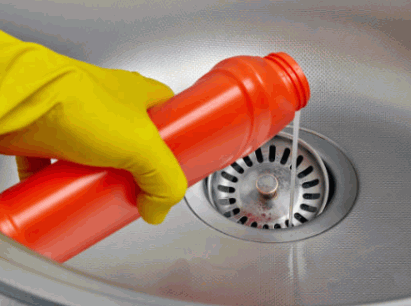
Mechanical drain unblockers, such as plumber's snakes and pipeline video inspection systems, offer physical solutions for removing blockages in pipes. These tools are effective in dislodging debris, clearing tree root intrusions, and identifying cracks or leaks in the sewer line.
Plumber's snakes, also known as drain augers, feature a long, flexible cable with a coiled end that can navigate through pipes to break up clogs. On the other hand, video inspection systems utilize small cameras attached to flexible rods to provide real-time visuals of the interior pipe condition. By pinpointing the exact location of obstructions, these tools allow plumbers to precisely target and resolve the issues efficiently.
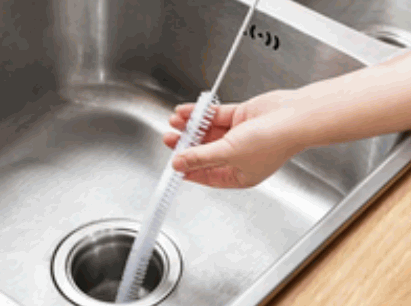
Natural drain unblockers rely on eco-friendly ingredients like vinegar and baking soda to break down blockages without harsh chemicals. These solutions are gentle on pipes, making them ideal for regular maintenance and preventing grease buildup in the P-Trap and other plumbing components.
One of the key advantages of using natural drain unblockers is their ability to effectively tackle stubborn blockages while being environmentally conscious. By harnessing the powerful cleaning properties of vinegar and baking soda, these solutions offer a safe and sustainable alternative to traditional harsh drain cleaners. Not only do they help in keeping your drains clear and odor-free, but they also help in maintaining the overall health of your plumbing system.
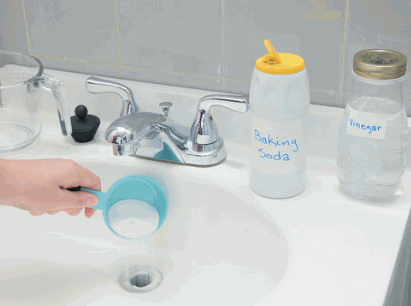
In terms of selecting the best kitchen drain unblockers, there are several top-rated products to consider. These options, including Liquid-Plumr Pro-Strength Drain Unblocker, Drano Max Gel Clog Remover, Green Gobbler Drain Clog Dissolver, Bio-Clean Drain Septic Bacteria, and Thrift Marketing GIDDS-TY Drain Cleaner, have been recognized for their effectiveness in addressing various clogging issues.
Each of these drain unblockers offers unique advantages that cater to different needs. While Liquid-Plumr is known for its fast-acting formula that can dissolve tough clogs quickly, Drano provides a powerful solution for deep-seated blockages. Green Gobbler stands out for its eco-friendly and biodegradable formula, making it a popular choice for environmentally-conscious consumers.
On the other hand, Bio-Clean uses natural enzymes to break down organic matter, making it a safe and effective option for regular maintenance. Thrift Marketing GIDDS-TY combines power and affordability, offering a cost-effective solution for common drain issues.
Liquid-Plumr Pro-Strength Drain Unblocker is a powerful solution designed to tackle tough clogs and blockages in kitchen sinks and plumbing systems. Its fast-acting formula effectively breaks down grease and organic matter while ensuring safety for pipes and septic tanks.
One of the standout features of Liquid-Plumr Pro-Strength Drain Unblocker is its ability to dissolve hair, soap scum, and other stubborn debris that often leads to blockages in drains. This product is not only effective in clearing clogs quickly but also prevents future build-ups, ensuring a smooth flow of water through the pipes. Its non-corrosive formula is gentle on pipes, making it a reliable choice for maintaining the integrity of your plumbing system.
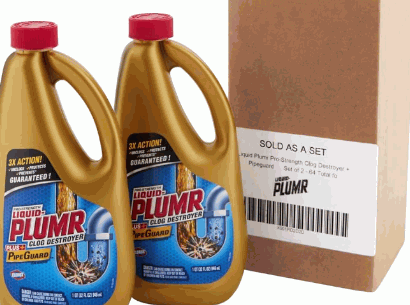
Drano Max Gel Clog Remover is a trusted solution for eliminating blockages in kitchen drains and pipes. Its tested formula effectively targets grease and hair build-up, ensuring safe and thorough unclogging to maintain optimal plumbing functionality.
By utilizing a powerful combination of ingredients, this clog remover dissolves even the toughest clogs swiftly, without causing any harm to your pipes or septic systems. One of the standout features of this product is its ability to work on both partially clogged drains and fully blocked pipes, providing versatility for various situations. Tested under rigorous conditions, Drano Max Gel has proven its efficacy in unclogging drains, making it a reliable choice for households facing recurrent plumbing issues. Its user-friendly application further simplifies the process, saving time and effort in dealing with stubborn clogs.
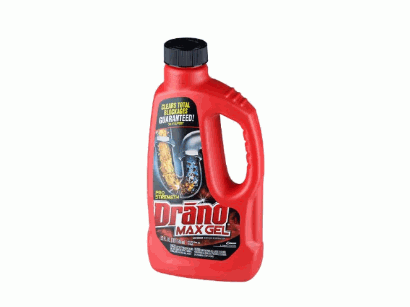
Green Gobbler Drain Clog Dissolver is a bio-friendly solution that targets blockages caused by organic compounds, grease, and food remnants. This product is safe for septic tanks and utilizes natural enzymes to break down clogs effectively without harmful chemicals.
It is designed to be gentle on the environment while still providing a powerful solution for clogged drains. The natural enzymes in Green Gobbler Drain Clog Dissolver work by breaking down organic matter at a molecular level, making it an effective yet eco-conscious choice. Its compatibility with septic tanks makes it a versatile option for households looking to maintain their plumbing systems without causing harm to the environment.
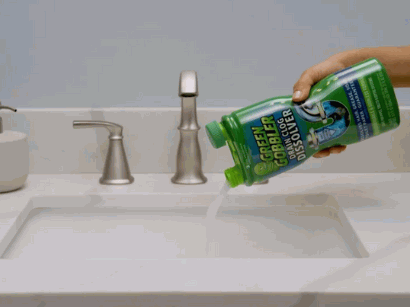
Bio-Clean Drain Septic Bacteria is a specialized product that utilizes beneficial bacteria and enzymes to break down organic matter in kitchen drains and septic systems. This solution promotes a healthy microbial environment, preventing future clogs and maintaining optimal septic tank performance.
By fostering a balanced bacterial ecosystem, this innovative product effectively mitigates the buildup of grease, fats, proteins, and other organic wastes that often lead to blockages in plumbing systems. The enzymatic action of Bio-Clean Drain Septic Bacteria accelerates the decomposition process, ensuring that waste is broken down efficiently and effectively. This gentle yet powerful formula is not only environmentally friendly but also helps to prevent foul odors and backups, providing a sustainable solution for septic tank maintenance.
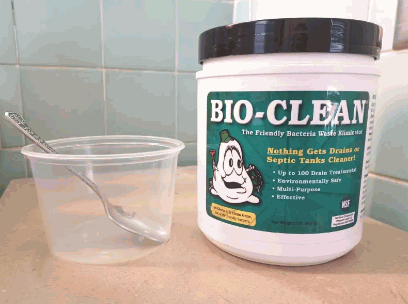
Thrift Marketing GIDDS-TY Drain Cleaner is a reliable solution for effectively clearing kitchen drain clogs and blockages. Its powerful formulation targets grease and debris buildup, ensuring safe and efficient unclogging without causing harm to plumbing systems.
One of the standout features of this drain cleaner is its ability to swiftly break down tough clogs, providing a quick and hassle-free solution for households dealing with stubborn blockages. Its non-corrosive nature makes it gentle on pipes, preventing any potential damage during the cleaning process.
The dependable performance of Thrift Marketing GIDDS-TY Drain Cleaner offers peace of mind to users, knowing they can trust its efficacy in maintaining clear and free-flowing drains. By effectively dissolving organic matter and grease, it promotes a healthier plumbing system and minimizes the risk of recurrent blockages.
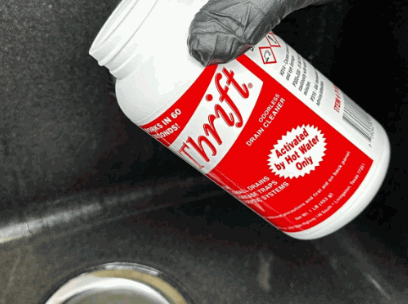
Using a kitchen drain unblocker effectively involves following the product instructions, applying the solution directly into the affected drain, and allowing sufficient time for it to work on the clog.
It's crucial to choose a drain unblocker suitable for the type of blockage you are dealing with, whether caused by grease, food particles, or soap residue.
Always wear protective gloves and goggles when handling drain unblockers to prevent skin irritation or accidental splashes.
To prevent future blockages, consider installing drain guards to catch debris before it enters the pipes, and remember to run hot water through the drains regularly to help clear any buildup. If the clog persists, a plumber's snake can be a handy tool to navigate deep into the pipes and dislodge the obstruction efficiently.
When using kitchen drain unblockers, it is important to prioritize safety by wearing protective gear such as gloves and goggles. Consider the environmental impact of the product and its compatibility with septic tanks to prevent harm to beneficial bacteria in the system.
Proper ventilation is crucial when working with potent drain-unblocking solutions to avoid inhaling harmful fumes. Ensuring adequate airflow in the area can mitigate the risks associated with strong chemical agents. It's also advisable to read and follow the manufacturer's instructions carefully to handle the product safely and effectively.
Plus using traditional drain unblockers, there are alternative methods for unclogging kitchen drains. These include pouring boiling water, creating a mixture of baking soda and vinegar, using a plunger, and employing a plumbing snake to dislodge stubborn blockages.
One effective way to start the unclogging process is by pouring boiling water down the drain. This can help break down grease and debris that may be causing the blockage. For a more natural approach, you can mix equal parts of baking soda and vinegar to create a foaming solution that can dissolve organic material. Another practical tool to have on hand is a plunger, which can create pressure to dislodge minor clogs. In cases of more severe blockages, a plumbing snake can be used to physically remove the obstruction within the pipes.
Boiling water is a simple yet effective method for loosening minor blockages in kitchen drains. By pouring hot water down the drain, you can help dislodge grease and food particles that may be causing slow drainage.
When using this method, it is important to boil a large pot of water until it reaches a rolling boil. Once the water is sufficiently hot, carefully pour it down the affected drain in a slow and steady stream. The heat from the boiling water can effectively break down the grease and debris that are causing the blockage, allowing them to flow through the pipes more easily. This method is particularly suitable for minor clogs caused by organic matter build-up or grease accumulation.
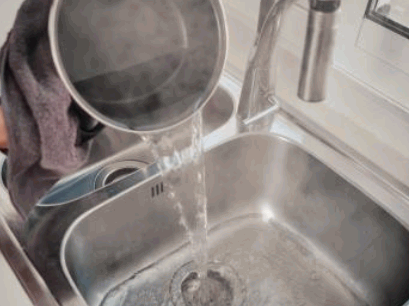
A mixture of baking soda and vinegar serves as a natural DIY solution for unclogging kitchen drains. The fizzy reaction created by these ingredients can help break down debris and odor-causing substances, offering a chemical-free alternative to traditional drain unblockers.
When combined, the baking soda and vinegar produce carbon dioxide gas, creating a bubbling action that helps dislodge blockages. This method is not only environmentally friendly but also budget-friendly, as these common household items are inexpensive and readily available. Unlike harsh drain cleaners that contain harmful chemicals, this homemade solution is safer for both your pipes and the environment.
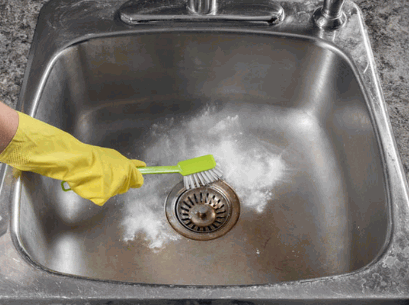
A plunger is a powerful tool for dislodging stubborn clogs in kitchen drains through the application of suction pressure. By creating a vacuum seal and plunging vigorously, you can break up blockages and restore proper water flow in the plumbing system.
When using a plunger, it's essential to ensure a tight seal between the plunger's cup and the drain opening. This seal is what allows the plunger to create the necessary suction to dislodge the obstruction.
Start by positioning the plunger directly over the drain and press down firmly, then rapidly push and pull the handle to generate the required pressure. This repeated motion helps to loosen and remove the blockage, allowing water to flow smoothly once again.
Plungers are particularly effective for clearing simple clogs caused by organic matter, grease, or small objects that have become trapped in the pipe. For more serious blockages or issues deeper within the plumbing system, it's best to seek professional assistance.
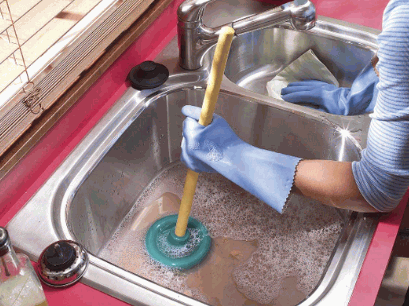
A plumbing snake, also known as a drain auger, is a mechanical tool used to navigate through pipes and dislodge deep blockages in kitchen drains. By inserting the snake into the drain and rotating it, you can break apart debris and clear obstructions along the sewer line.
When dealing with stubborn clogs that are not responsive to plunging, a plumbing snake becomes a valuable asset. The design of the snake allows it to maneuver through twists and turns in the pipes, reaching blockages that are situated far down the line. As the snake is rotated, its corkscrew-like tip grabs onto the debris, allowing you to pull it back out of the drain. This process is effective not only for removing clogs from kitchen drains but also for addressing issues in sewer lines.
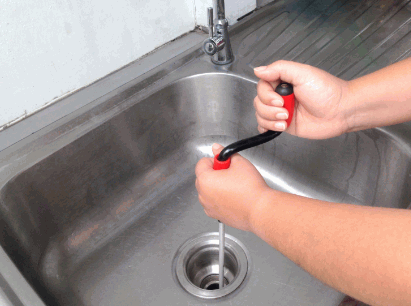
Table Of Contents
Have you ever experienced the frustration of a clogged sink drain?
There are various reasons why sink drains get blocked, from food particles to grease and hair.
In this article, we will explore the causes of sink drain clogs and discuss the tools you need to clean them effectively.
Whether you prefer using a plunger, drain snake, or natural remedies like baking soda and vinegar, we've got you covered.
Stay tuned for tips on preventing clogs and learn why it's essential to keep your sink drains clean.
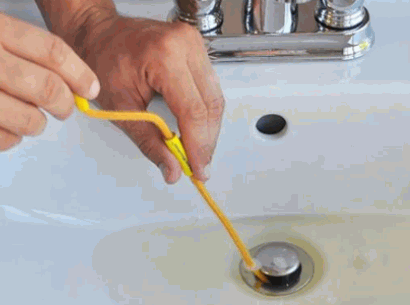
Sink drains get clogged due to various reasons, including the accumulation of food particles, grease, oil, hair, and soap scum. Understanding these causes can help in preventing clogs and maintaining a clean and functional drain.
Food particles are a common culprit in kitchen sinks, where scraps of vegetables, seeds, or even small pieces of meat can build up over time, restricting water flow. Grease and oil from cooking can solidify in the pipes, creating blockages that impede drainage. Hair is another major issue, especially in bathroom sinks or showers, as it easily clumps together with soap scum, forming tough clogs.
Regular maintenance, such as using drain covers, disposing of food scraps properly, and periodically cleaning the pipes with vinegar or baking soda can help avoid these clogging problems and ensure a smoothly running drain system.
Learn more: How To Clean Drain Of Dishwasher
The build-up of food particles in sink drains is a common issue in many households, leading to slow drainage and potential clogs. Proper cleaning and maintenance can prevent this buildup and ensure smooth water flow.
Food particles often stick to the walls of the drain and can accumulate over time, causing blockages. One effective way to remove these particles is by using a mixture of vinegar and baking soda. Pour this down the drain, let it sit for a while, then flush it with hot water to break down the debris. Another handy trick is to use a plumber's snake to physically dislodge any stubborn clogs that are deeper in the drain.
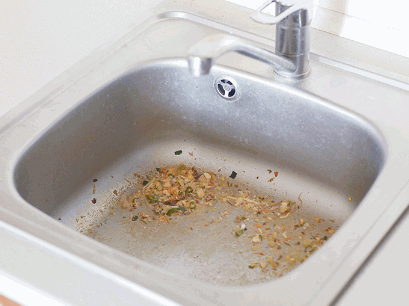
Grease and oil accumulation in sink drains is a major contributor to clogs, especially in kitchen sinks where cooking residues often find their way into the plumbing. Regularly cleaning and degreasing the drains can help prevent blockages.
In kitchen sinks, the combination of food particles, fats, and oils creates a sticky residue that coats the pipes over time. This build-up not only restricts water flow but also provides a breeding ground for bacteria and unpleasant odors. To combat this, using specialized grease-fighting cleaners or natural solutions like baking soda and vinegar can effectively break down the greasy deposits. Installing a strainer or drain cover can help trap larger food particles and prevent them from entering the pipes.
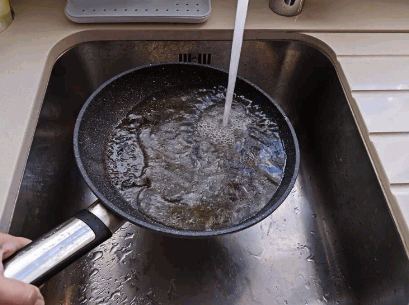
Hair and soap scum can create stubborn clogs in bathroom sink drains, leading to water backup and unpleasant odors. Regular cleaning with suitable products can prevent these blockages and maintain a fresh-smelling drain.
When hair gets washed down the drain, it often combines with soap scum, forming a sticky residue that coats the pipes over time.
This residue then traps other debris passing through the drain, gradually building up and impeding the flow of water.
To effectively combat this buildup, it's recommended to use a drain snake or a mixture of baking soda and vinegar.
These natural remedies can help break down the clogs without harsh chemicals that may damage your pipes.
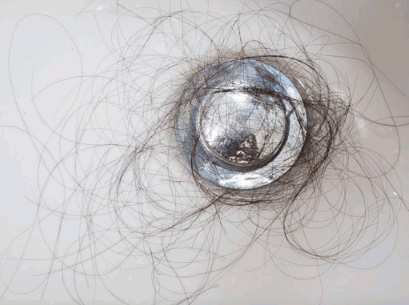
Cleaning sink drains effectively often requires specific tools like a plunger, drain snake, baking soda, vinegar, or commercial drain cleaners. Having these tools on hand can help you tackle various clogging issues with ease.
A plunger is a versatile tool that uses suction to dislodge clogs in sinks. It works best for minor blockages caused by organic matter or soap scum. To use a plunger effectively, ensure a tight seal around the drain and use quick, vigorous plunges to create pressure changes that help release the blockage.
A drain snake, also known as a plumber's auger, is ideal for reaching deep clogs or removing hair and debris causing the obstruction. The flexible metal cable of a drain snake can navigate bends in the pipe and hook onto the blockage for removal.
A plunger is a versatile tool for clearing clogs in sink drains by creating pressure to dislodge blockages. Knowing how to use a plunger correctly can save you from calling a plumber for minor drain issues.
There are different types of plungers available, such as cup plungers and flange plungers, each designed for specific drain types. To effectively use a plunger, start by ensuring a tight seal around the drain opening with the plunger cup. Plunging in a smooth, rhythmic motion will help generate enough pressure to push the clog through the pipes. For better results, fill the sink with enough water to cover the plunger cup. Remember to clean the plunger after each use and store it in a dry place to prevent contamination.
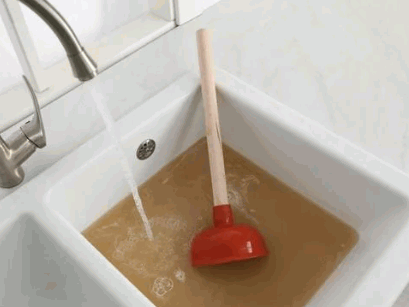
A drain snake is a flexible tool that helps remove stubborn clogs deep within sink drains, especially those caused by compacted debris or hair. Using a drain snake requires proper technique to avoid damaging the pipes.
When faced with a clogged sink drain, a drain snake can provide a cost-effective solution before having to call a professional plumber. This tool is designed to navigate through the twists and turns of the pipes to break up blockages and allow water to flow freely again.
To use a drain snake properly, begin by inserting the auger end into the drain and rotating it clockwise while applying gentle pressure. As the snake moves further down the pipe, it will catch onto the clog, allowing you to pull it out slowly.
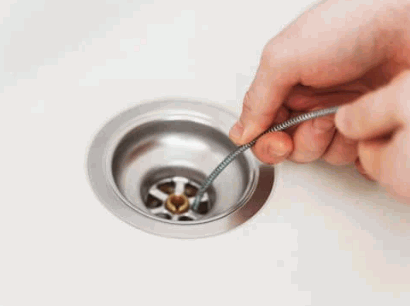
Baking soda and vinegar offer a natural and effective solution for cleaning sink drains, breaking down organic matter, and eliminating odors. This DIY method is safe for pipes and the environment.
To utilize this eco-friendly cleaning method, start by pouring 1 cup of baking soda down the drain, followed by 1 cup of vinegar. Let the mixture sit for about 30 minutes to fizz and work its magic. After that, flush the drain with hot water to rinse away the residue, leaving your drain clean and fresh.
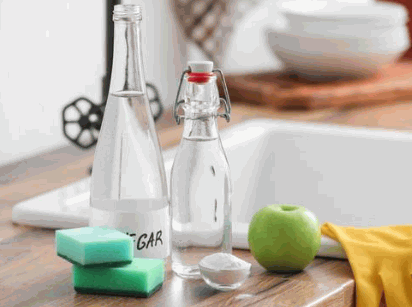
Commercial drain cleaners are available in chemical-based and enzyme-based formulations, offering quick solutions for stubborn clogs. Understanding the safety and effectiveness of these cleaners is crucial before use.
Chemical-based drain cleaners contain powerful agents like sodium hydroxide or sulfuric acid that can dissolve blockages rapidly. They are effective for clearing severe clogs caused by grease, hair, or paper products. These cleaners can be harsh on pipes and may emit fumes harmful to humans and pets.
On the other hand, enzyme-based cleaners use naturally occurring bacteria to break down organic matter, making them safer for pipes and the environment. While enzyme cleaners require more time to work, they are gentle and eco-friendly options for regular maintenance.
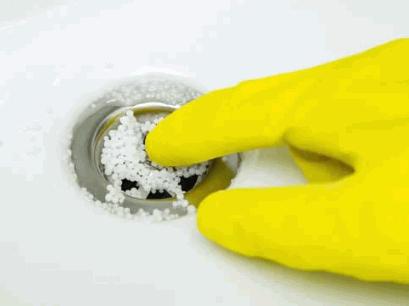
Cleaning a sink drain with a plunger is a straightforward DIY task that can quickly resolve common clogging issues. By following a few simple steps, you can restore proper drainage and prevent further blockages.
Start by removing any visible debris or hair near the drain entrance.
For more stubborn blockages, consider using a drain snake to break up the debris. If despite your efforts the drain remains slow or completely blocked, it may be time to seek professional help from a plumber to address potential deeper issues within the plumbing system.
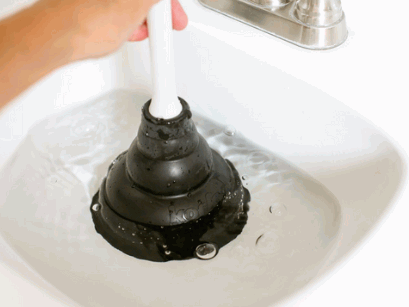
Using a drain snake to clear clogs in sink drains requires proper technique and caution to avoid causing damage.
You should ensure that the drain snake has the appropriate length to reach the clog.
Safety precautions are crucial during this process; wear gloves and safety goggles to protect yourself from any debris or splashes.
If you encounter a stubborn clog, gently maneuver the snake back and forth to dislodge it without exerting excessive force. It's essential to identify whether the clog is caused by organic matter like hair or grease, which may require a different approach for effective removal.
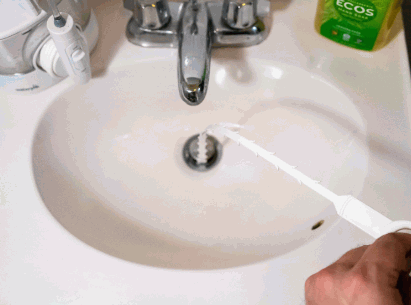
Cleaning sink drains with baking soda and vinegar is an eco-friendly and cost-effective method that helps eliminate odors and debris. This natural cleaning solution is simple to use and safe for regular maintenance.
Start by pouring 1/2 cup of baking soda down the drain, followed by 1/2 cup of vinegar. The mixture will fizz and bubble, which helps break down any buildup or clogs. Let it sit for about 30 minutes to allow the reaction to work its magic. Afterward, rinse with hot water to wash away the residue and any remaining debris.
One of the key benefits of using this method is that baking soda and vinegar are non-toxic and do not harm the environment or your plumbing system. Unlike chemical drain cleaners, these natural ingredients are gentle yet effective in cleaning and maintaining your sink drains.
To prevent future clogs, consider performing this quick cleaning routine once a month. Avoid disposing of grease, oil, or food scraps down the drain, as these can contribute to blockages over time. Being mindful of what goes into your sink can prolong the efficiency of your plumbing and reduce the need for harsh chemical cleaners.
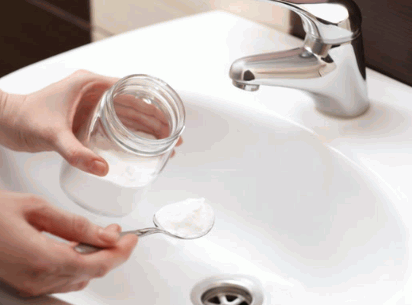
Understanding the safety considerations of using commercial drain cleaners is essential, especially when dealing with persistent clogs. Both chemical-based and enzyme-based cleaners have their advantages and limitations.
Chemical-based drain cleaners are known for their quick and powerful action in breaking down tough clogs; however, they contain harsh chemicals that can pose health risks if not handled properly. On the other hand, enzyme-based cleaners use natural enzymes to eat away at organic matter, offering a safer alternative without emitting harmful fumes. It's crucial to follow manufacturer instructions meticulously when using any type of drain cleaner to ensure effectiveness and prevent accidental exposure to hazardous substances.
Chemical-based drain cleaners offer a quick solution for tough clogs but may contain harsh ingredients that can be damaging to pipes and harmful if misused. It is essential to follow safety guidelines when using these cleaners.
These cleaners work by dissolving the clogs in your pipes, often consisting of hair, grease, or soap scum. While effective, the strong chemicals in some cleaners can cause corrosion, leading to costly plumbing repairs.
When using chemical cleaners, make sure to wear protective gear like gloves and goggles to prevent skin and eye irritation. It is also important to ventilate the area well to avoid inhaling harmful fumes.
Alternative methods such as using a drain snake or a mixture of baking soda and vinegar can be safer for both your pipes and health.
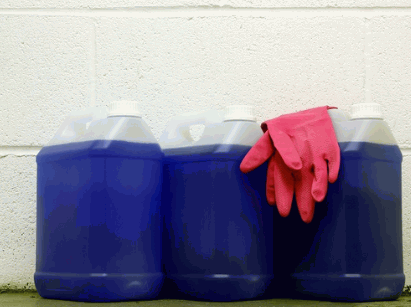
Enzyme-based drain cleaners utilize biological agents to break down organic matter, offering a safer and eco-friendly alternative to chemical cleaners. These cleaners are effective for regular maintenance and prevention of clogs.
Unlike harsh chemical drain cleaners that can cause damage to pipes and harm the environment, enzyme-based solutions work by introducing enzymes that target and digest organic debris, such as food particles, grease, and hair.
The enzymes in these cleaners break down the clogs gradually, preventing future blockages without the need for aggressive chemicals. Since they are made from natural ingredients, enzyme-based cleaners are gentle on plumbing systems and safe for septic tanks.
To use enzyme-based drain cleaners effectively, it is advisable to pour them down the drain at night to allow a longer contact time for the enzymes to work their magic. Regularly using enzyme cleaners can help maintain clean and clear drains, reducing the risk of costly plumbing issues.
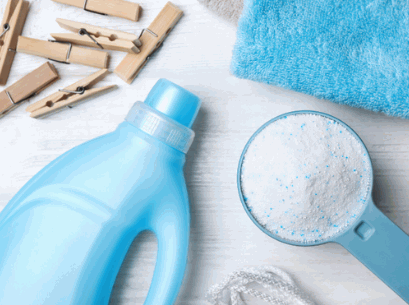
Preventing clogs in sink drains involves simple yet effective practices like using a sink strainer, avoiding pouring grease and oil down the drain, and maintaining regular cleaning routines. These preventive tips can help keep your drains clear and odor-free.
It's important to be mindful of what goes down the drain. Small food scraps, coffee grounds, and pasta can all contribute to clogs over time. You can scrape leftovers into the trash rather than rinsing them down the sink.
Proper waste disposal is key to preventing blockages. Establishing a cleaning schedule for your drains, such as flushing them with hot water and vinegar once a month, can also help break down potential build-up and maintain optimal drainage flow.
Using a sink strainer is an effective way to prevent debris, food particles, and other substances from entering the drain and causing clogs. This simple device can significantly reduce the risk of blockages and plumbing issues.
When water flows through the sink, the strainer catches solid particles, allowing only liquid to pass through. This helps maintain a healthy drainage system and extends the lifespan of your pipes. By preventing larger objects from going down the drain, you also minimize the chances of encountering costly plumbing repairs. Investing in a quality sink strainer can save you time, money, and the hassle of dealing with stubborn clogs in the long run.
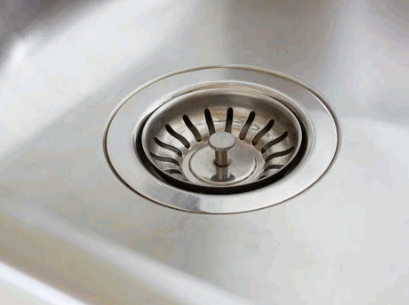
To prevent clogs in sink drains, it is crucial to avoid pouring grease and oil down the drain, as these substances can solidify and block the plumbing over time. Proper disposal methods can help maintain a clean and functional drain system.
When grease and oil are poured down the drain, they may seem harmless at first, but as they cool, they harden and adhere to the walls of the pipes, leading to the accumulation of debris and causing blockages. These blockages can result in slow drainage, foul odors, and even expensive repairs. It is essential to adopt alternative disposal solutions such as collecting and storing used cooking oil in a container and then disposing of it in designated receptacles or recycling centers.
Regularly cleaning the drain is an essential maintenance task that helps prevent clogs and maintain optimal drainage. Establishing a cleaning routine can keep your sink drains clear of debris and odors.
Experts recommend cleaning your drains at least once a month to prevent buildup and potential blockages. A simple and effective method is to pour boiling water down the drain followed by a mixture of baking soda and vinegar to break down grease and grime. Another helpful tip is to use a drain snake to physically remove any stubborn clogs. Maintaining clean drains not only promotes good hygiene but also extends the lifespan of your plumbing system, saving you from costly repairs in the long run.
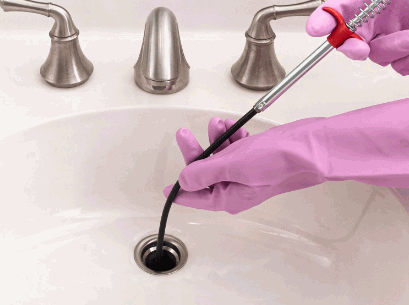
Maintaining clean sink drains is crucial for ensuring proper drainage, preventing clogs, and promoting household hygiene. By following simple cleaning practices and preventive measures, you can extend the longevity of your plumbing system.
Regular cleaning of sink drains not only prevents unpleasant odors and blockages but also reduces the risk of potential water damage and mold growth in your home.
Keeping your drains clean and clear can help maintain the overall efficiency of your plumbing system, saving you from costly repairs in the long run.
To ensure optimal drain health, consider using eco-friendly drain cleaners or simple homemade solutions like vinegar and baking soda.
Remember to avoid pouring grease, coffee grounds, or other solid materials down the drain to prevent buildup and maintain smooth water flow.
Investing in a sink strainer can help trap debris before it enters the drain and causes blockages, making your cleaning routine more effective and hassle-free.
Table Of Contents
Are you wondering how to paint new plaster and achieve a flawless finish?
This article explores everything you need to know about painting new plaster, from the recommended drying time to the types of paint that can be used. We will also discuss the preparation steps and tips for a smooth painting process.
Whether you are a DIY enthusiast or a professional painter, this article will provide you with valuable insights to ensure a successful painting project.
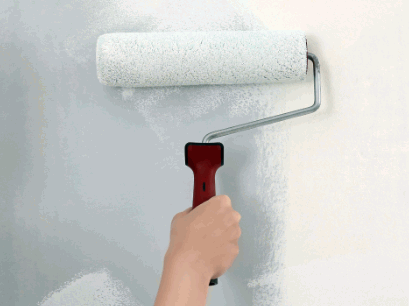
Plaster is a versatile building material used for coating walls and ceilings, providing a smooth and durable finish.
Plaster typically consists of a mixture of gypsum, lime, sand, and water, creating a paste-like substance that hardens when dry. It is applied in layers to create a solid surface that can be painted or decorated further.
The application of plaster can be done manually using a hawk and trowel or through modern techniques like spray-on plaster. This material is essential in construction for providing a level base for painting and other wall finishes as well as for its fire-resistant and sound-absorbing properties.
Plaster is commonly used in residential and commercial buildings for creating decorative moldings, ornamental designs, and textured finishes on walls and ceilings.
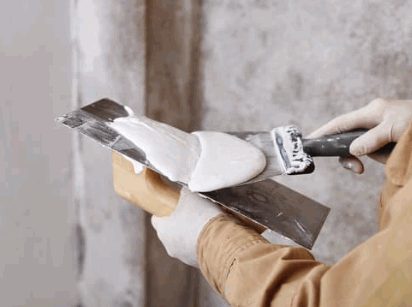
New plaster refers to freshly applied plaster that has not fully dried or cured, requiring specific treatment before painting.
When dealing with new plaster, it is essential to understand its unique characteristics. New plaster is often softer and more absorbent than fully cured plaster, making it crucial to prepare it properly for painting. To do this, make sure to apply a primer specifically designed for fresh plaster. This primer helps seal the surface, preventing excessive absorption of paint and ensuring a smooth finish.
Another important aspect is allowing the new plaster to dry thoroughly before painting. Rushing this process can lead to paint peeling, cracking, or not adhering properly. It is generally recommended to let the plaster cure for at least a couple of weeks before applying any paint.
Find out more: How Much Does Venetian Plastering Cost
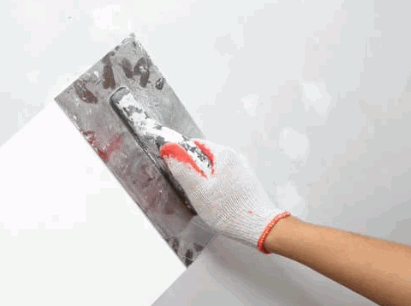
Painting new plaster is possible but requires proper preparation and adherence to specific guidelines to ensure a successful finish.
One crucial step in painting fresh plaster is applying a mist coat. This diluted layer of emulsion helps the paint adhere better and prevents it from peeling off. In terms of choosing the right paint for new plaster, opting for a breathable emulsion is key to allowing moisture to escape, and preventing dampness issues. Utilizing a primer specifically designed for fresh plaster can enhance the durability and coverage of the final paint layers.
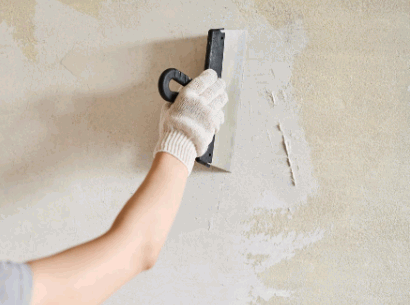
The recommended drying time for new plaster varies depending on factors such as room temperature, humidity levels, and plaster thickness.
Room temperature plays a crucial role in how fast or slow plaster dries. Lower temperatures can significantly prolong the drying process, while higher temperatures promote quicker drying. Ideally, the room temperature should be around 20-25°C for optimal drying. Additionally, humidity levels also impact drying time; higher humidity can slow down the evaporation of water from the plaster. It's recommended to keep humidity levels below 70% to aid in efficient drying.
Several factors can influence the drying time of new plaster, including ventilation, room temperature, humidity, and the thickness of the plaster application.
Proper ventilation plays a crucial role in expediting the drying process, as fresh air circulation helps in carrying moisture away from the surface. Maintaining an optimal room temperature promotes faster evaporation of water content present in the plaster. High humidity levels can significantly slow down drying time, leading to potential issues such as mold growth and poor adhesion for paint. The thickness of the plaster layer also impacts drying; thicker applications take longer to dry as the inner layers struggle to release trapped moisture.
Various types of paint can be used on new plaster, including emulsion, acrylic, latex, and oil-based paints, each offering unique characteristics and benefits.
Emulsion paint, also known as water-based paint, is a popular choice for new plaster due to its quick drying time, easy application, and low odor. It provides a smooth finish and is available in various finishes such as matt, silk, and satin.
Acrylic paint is another excellent option known for its durability, quick drying, and resistance to fading. It works well on new plaster walls and ceilings and is suitable for high-traffic areas.
Latex paint, a type of water-based paint, is easy to clean up with soap and water, making it ideal for interior surfaces. It offers good coverage and is less likely to crack or peel.
Oil-based paint, while less common nowadays, is known for its durability and high sheen. It provides a hard-wearing finish that is suitable for surfaces like trim, doors, and cabinets.
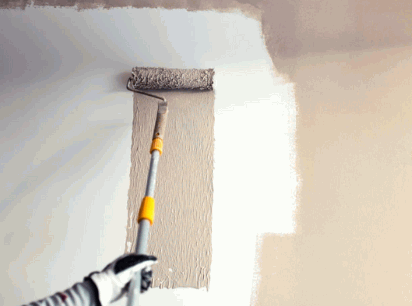
Emulsion paint is a popular choice for painting walls and ceilings, known for its durability, ease of application, and wide range of available colours.
Its composition typically includes water, binding agents, pigments, and additives that enhance properties like washability and coverage. Emulsion paint is favored for its quick drying time, making it an ideal option for those looking to finish a project efficiently. Its matte finish is great for concealing imperfections on surfaces, especially on new plaster, providing a smooth and elegant look.
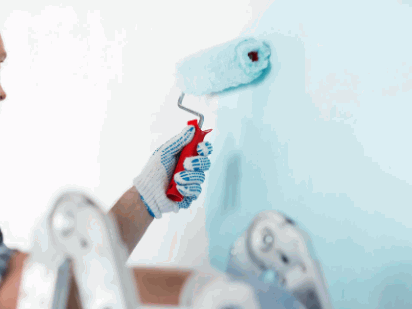
Acrylic paint is a versatile and fast-drying paint type that offers excellent adhesion to new plaster surfaces, making it an ideal choice for interior painting projects.
One of the key properties of acrylic paint is its water-based formulation, which not only makes it easy to clean up but also ensures quick drying times, allowing for faster project completion. The wide range of color options available in acrylic paints makes it a favorite among artists and DIY enthusiasts alike. Acrylic paint is known for its durability and resistance to cracking and yellowing over time, providing long-lasting results. When applying acrylic paint on new plaster, it is important to properly prepare the surface by priming it first to ensure optimal adhesion and a smooth finish.
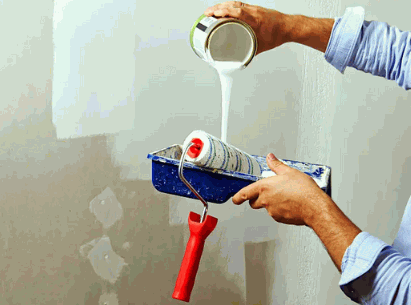
Latex paint, also known as water-based paint, is a popular choice for painting new plaster due to its quick drying time, low odour, and easy cleanup.
Latex paint is preferred for new plaster surfaces as it provides a smooth finish with excellent adhesion, preventing peeling or cracking over time. This type of paint is highly versatile and suitable for various surfaces such as walls, ceilings, and trim. Its durability and resistance to fading make it a practical choice for long-lasting results. Additionally, latex paint comes in a wide range of colors and sheens, offering flexibility for different design preferences. When applying latex paint on new plaster, proper surface preparation is essential to ensure a flawless and lasting paint job.
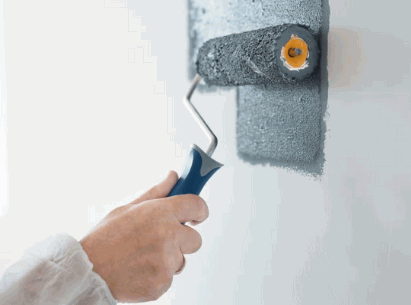
Oil-based paint offers a durable and high-gloss finish for new plaster surfaces but requires longer drying times and proper ventilation during application.
Despite the longer drying times, oil-based paint is preferred for its strong resistance to wear and tear, making it ideal for high-traffic areas. The glossy finish adds a luxurious touch, enhancing the overall aesthetic of the space. It is crucial to ensure good ventilation when working with oil-based paint, as the fumes can be potent. Applying thin layers with a high-quality brush or roller helps in achieving a smooth and professional-looking result. Be prepared for the added cleanup time, as oil-based paints require mineral spirits or paint thinner for cleaning brushes and spills.
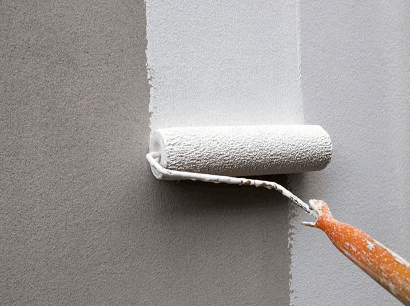
Preparing new plaster for painting involves using specific tools and materials to ensure a smooth and long-lasting finish.
Primarily, prior to painting new plaster surfaces, it is crucial to start by priming the walls or ceilings to promote adhesion and prevent the paint from soaking into the porous surface. This step involves applying a primer that is specifically designed for new plaster to create a suitable base for the paint to adhere to.
Following this, sanding the plaster is essential to smooth out any imperfections, bumps, or rough areas that may affect the final paint application. Once the surface is primed and sanded, it is important to seal the plaster with a sealant to further enhance its durability and prevent moisture absorption.
By meticulously following these steps, you can ensure a flawless and professional-looking paint finish on your new plaster surfaces.
To prepare new plaster for painting, you will need tools such as brushes, rollers, sandpaper, primers, and sealants to achieve a professional finish.
Brushes play a crucial role in applying paint evenly on the plaster surface, ensuring a smooth and flawless result. Rollers are excellent for covering larger areas quickly and efficiently, making them a time-saving tool. Sandpaper is essential for smoothing out imperfections and rough spots on the plaster before painting, creating a uniform surface for better adhesion.
Primers act as a base coat to enhance paint adhesion to the plaster, promoting durability and a more vibrant color payoff. Sealants help seal the porous surface of the plaster, preventing moisture damage and ensuring the longevity of the paint job.
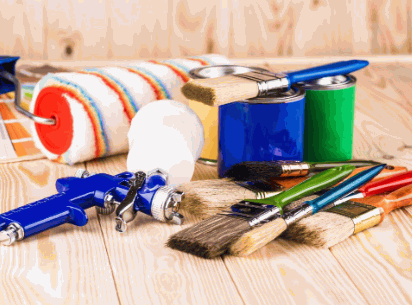
The preparation of new plaster involves steps such as cleaning, priming, applying mist coats, and ensuring proper ventilation to facilitate the painting process.
Achieving a smooth finish when painting new plaster requires attention to detail, proper technique, and adherence to best practices.
When painting new plaster, it's crucial to start with a high-quality primer to ensure proper adhesion of the paint.
Common mistakes to avoid include overloading the brush or roller, skipping the mist coat, and rushing the drying process.
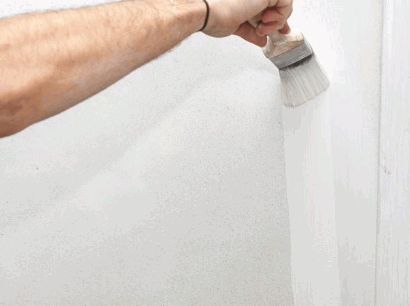
To achieve a smooth finish when painting new plaster, ensure proper surface preparation, use high-quality tools, apply mist coats, and allow sufficient drying time between layers.
Proper surface preparation involves cleaning the plaster surface thoroughly to remove any dust or debris. Fill any imperfections with a suitable filler and sand smooth. Use high-quality tools such as good-quality brushes or rollers for an even application of paint. Applying mist coats before the final coats will help the paint adhere better to the plaster. It is crucial to allow sufficient drying time between each coat to prevent cracking or uneven finish. Patience is key in achieving a professional result when painting new plaster.
Common mistakes when painting new plaster include applying too thick coats, skipping priming, rushing the drying process, and neglecting proper ventilation.
Applying too thick coats can lead to uneven drying, resulting in a patchy finish. To avoid this issue, it's important to use multiple thin coats rather than one thick layer.
Skipping priming can cause the paint to not adhere properly to the plaster surface, leading to peeling or flaking. To prevent this, always prime the plaster before painting to create a smooth and stable base.
Rushing the drying process can cause the paint to not bond well with the plaster, resulting in poor adhesion and potentially causing the paint to peel off over time. Allow each coat to dry completely as per the manufacturer's instructions.
Neglecting proper ventilation can lead to moisture buildup, which may affect the drying time of the paint and result in a less durable finish. Ensure good airflow in the room by opening windows or using fans during and after painting.
Table Of Contents
Venetian plastering is a technique that has been around for centuries, originating in Venice, Italy.
We explore the benefits of Venetian plastering, including its aesthetic appeal, durability, and versatility.
Delve into the factors that can affect the cost of Venetian plastering, such as surface preparation, type of plaster used, and labor costs.
Discuss the average cost of Venetian plastering and provide tips on how to find a reliable and affordable contractor for your project.
If you are considering Venetian plastering for your home or business, this article will provide you with valuable insights to help you make an informed decision.
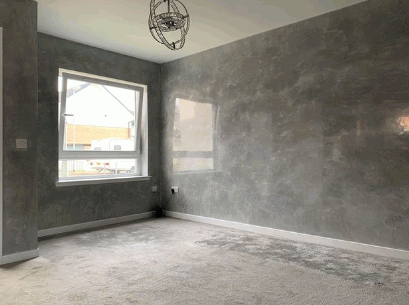
Venetian plastering is a technique that involves using a mix of plaster and natural materials to create a smooth, elegant finish on walls and surfaces.
This process typically begins with prepping the surface by ensuring it is clean and smooth. The key ingredient in Venetian plaster is lime plaster, which gives it durability and a unique texture. The application of plaster involves carefully layering the mixture onto the walls with a trowel, creating a seamless look. The art of Venetian plastering lies in the applying and polishing stages, where skilled craftsmen enhance the finish, bringing out the depth and richness of the surface.
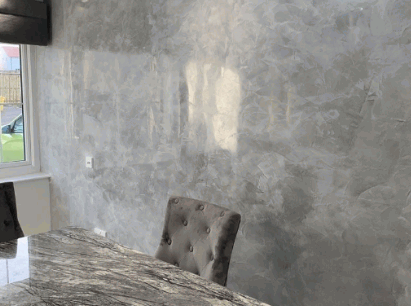
Venetian plastering offers numerous benefits, including durability, versatility, and easy maintenance for walls and surfaces.
Its durability is unmatched, as it can withstand wear and tear over time without losing its charm. The versatility of Venetian plaster allows for endless design options, from creating a polished marble-like finish to adding textured effects for a more rustic look. Its low maintenance requirements make it a practical choice for homeowners looking for long-lasting beauty without the hassle of frequent upkeep.
One of the key advantages of Venetian plastering is its ability to create visually stunning walls that appeal to plaster-loving designers like Leigh Herzig and Axel Vervoordt.
The finish achieved through Venetian plastering is renowned for its luxurious and sophisticated appearance, often mimicking the depth and texture of marble or stone.
Designers such as Herzig and Vervoordt have incorporated this technique into their projects, elevating the aesthetic appeal of spaces with its Old World charm.
This method of wall finishing has gained immense popularity in the design world due to its versatility in creating unique and customized surfaces that add a touch of elegance to any interior.
Venetian plastering is known for its durability and longevity, as it utilizes the strength of lime and advanced plastering technology to ensure walls remain pristine for years.
Lime plaster has been used for centuries in construction due to its remarkable durability and natural properties. When combined with modern techniques, such as multiple layers and fine sanding, it creates a strong bond that resists cracks and wear. The interaction between the lime and minerals in the plaster results in walls that are not just visually stunning but also incredibly sturdy. This unique combination of traditional materials and innovative processes sets Venetian plastering apart in terms of creating long-lasting and resilient walls.
Venetian plastering stands out for its versatility and customizability, allowing for a range of design options to suit different preferences, making it a favorite among interior designers looking for a Venetian touch.
Whether you prefer a sleek and modern finish or a more traditional and textured look, Venetian plastering can be tailored to meet your specific design vision. Its ability to mimic the luxurious appearance of polished marble or create a rustic, old-world charm makes it a go-to choice for those seeking to infuse their interiors with a touch of Venetian elegance.
Interior designers often turn to Venetian plastering to add depth and character to walls, ceilings, or even furniture pieces. The versatility of this technique extends beyond just walls, allowing for creative applications that can transform any space into a work of art.
Beyond its beauty, Venetian plastering is praised for being easy to maintain, requiring minimal upkeep to preserve the smooth surface of walls and surfaces.
Unlike other wall finishes that demand frequent attention, maintaining Venetian plaster is a breeze. A simple dusting or occasional wipe down with a damp cloth is usually all that's needed to keep it looking fresh. Regular cleaning helps prevent dirt and grime from accumulating, ensuring that your Venetian plaster retains its luxurious appearance for years to come. This makes it a popular choice for homeowners and designers looking for a low-maintenance yet sophisticated wall treatment.
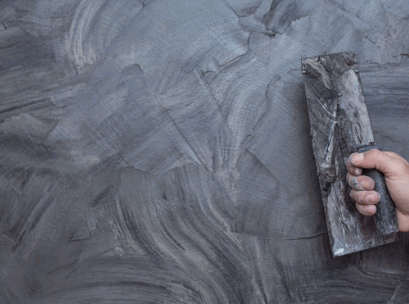
The cost of Venetian plastering can vary based on factors such as the size of the project, the hourly rates of labor, the complexity of the design, and the materials used for walls.
Labor rates play a crucial role in determining the overall cost, as experienced artisans may charge higher than those with less expertise. The quality and type of materials chosen for the walls can significantly impact the expenses involved.
Project size is also a key determinant, with larger surfaces necessitating more materials and labor hours, thus increasing the total cost of the Venetian plaster installation. The intricacy and design complexity further add to the pricing, as intricate patterns or custom finishes may require more skill and time.
Surface preparation plays a crucial role in the cost of Venetian plastering, as intricate designs and uneven walls may require additional work, impacting the overall project expenses.
Properly preparing the surface before applying Venetian plaster is vital, as it ensures a smooth and durable finish. The complexity of the design can significantly affect the amount of preparation needed, with intricate patterns demanding more attention to detail. Similarly, the condition of the walls plays a crucial role; the smoother and more even the walls, the less extensive the preparation work required.
The choice of plaster material significantly impacts the cost of Venetian plastering, with options like lime plaster offering both aesthetic appeal and durability for walls.
When considering different materials for Venetian plaster, it's essential to understand the long-term implications on both the overall look and sustainability of the walls. Lime plaster stands out as a preferred choice due to its ability to create a smooth, polished finish that exudes a sense of elegance and sophistication.
Moreover, lime plaster has been known to withstand the test of time, maintaining its beauty and structural integrity over the years. This durability not only ensures a timeless appeal for your walls but also reduces the need for frequent repairs or reapplications, ultimately saving you costs in the long run.
The intricacy of the design chosen for Venetian plastering directly correlates with the overall cost, as more complex patterns or textures require additional labor and materials for walls.
When opting for intricate patterns or elaborate textures, the process of applying Venetian plaster becomes more time-consuming and meticulous.
Intricate designs demand skilled craftsmanship and attention to detail, leading to an increase in labor costs. Moreover, specialized tools and a higher quantity of materials may be necessary to achieve the desired aesthetic, further elevating the overall expenses. As a result, the complexity of design significantly impacts the final cost of Venetian plastering projects.
Dig deeper: What Are The Tools Used In Plastering
The size of the area to be plastered is a key determinant of Venetian plastering costs, with larger projects naturally requiring more materials, labor, and time for walls.
When undertaking a Venetian plaster project, whether it's for a small accent wall or an entire room, the scale of the area plays a crucial role in estimating the overall expenses. For sizable spaces, the cost tends to escalate due to the need for additional supplies such as plaster, pigments, and sealers. Larger areas often demand greater labor effort, as the application process becomes more intricate and time-consuming.
Labor costs are a significant component of Venetian plastering expenses, with hourly rates and daily rates impacting the overall cost of a project based on the amount of work required.
When planning a Venetian plastering project, it is crucial to carefully assess the labor costs, as they can heavily influence the budget and timeline. Skilled laborers with expertise in applying Venetian plaster may charge higher hourly rates, reflecting their experience and craftsmanship. The intricacy of the design and the surface area to be covered play a key role in determining the labor intensity and hence the total labor costs involved.
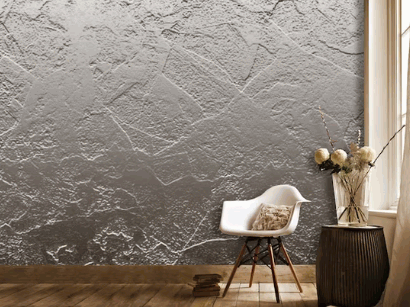
The average cost of Venetian plastering is typically calculated per square foot, factoring in the project scope and the intricacy of Venetian plaster installation.
When estimating the cost of Venetian plastering per square foot, various factors come into play. The size of the project area is a significant consideration; larger spaces usually incur lower costs per square foot due to economies of scale. The level of detail required in the plasterwork can impact the overall price. Intricate designs or custom patterns may raise the cost per square foot. It's essential to consider the material quality as well, as premium Venetian plaster materials can increase the price. Professional labor costs are another contributing factor to the total cost of the project.
The cost per square foot for Venetian plastering varies based on factors like material quality, design complexity, and the desired finish, influencing the overall Venetian plaster price for walls.
Regarding material choices, Venetian plaster costs can fluctuate significantly. Opting for high-quality materials like authentic lime-based plaster can escalate the cost per square foot, but offers durability and a luxurious finish. Conversely, selecting synthetic alternatives may lower the cost per square foot, but could compromise the authenticity and longevity of the plaster.
Design intricacy plays a crucial role as well; intricate patterns or custom designs can raise the cost per square foot due to the skilled labor and time required.
The desired finish greatly impacts the overall Venetian plaster price. A polished glossy finish typically costs more compared to a matte or textured finish. Factors like multiple layers, special techniques, or specific color blends can also drive up the cost per square foot.
The cost per hour in Venetian plastering accounts for labor expenses, material usage, and the efficiency of the workforce, influencing the overall project cost.
Hourly rates play a crucial role in determining the cost structure of Venetian plastering projects. As the hourly rates directly impact the labor costs, material consumption, and workforce productivity, they significantly affect the total expenses involved in the project.
Higher hourly rates lead to increased labor expenses, ultimately raising the project cost. Efficient workforce management coupled with reasonable hourly rates can contribute to cost savings, optimizing the overall financial aspect of Venetian plastering.
Estimating the cost for a standard room in Venetian plastering involves assessing the room size, the complexity of the design, and the scope of Venetian plaster work required for a comprehensive budget calculation.
Room size plays a crucial role in determining the quantity of materials needed for the Venetian plastering project. Larger rooms typically require more plaster material, affecting the overall cost. The intricacy of the design influences the labor hours required to achieve the desired finish, impacting the total expenses. Calculating the cost for a standard room in Venetian plastering also involves considering the extent of work needed to cover the walls evenly and achieve the desired smooth texture.
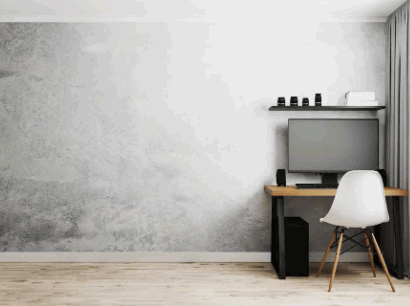
Finding a trustworthy and cost-effective Venetian plastering contractor involves conducting research, seeking referrals, verifying licensing and insurance credentials, and securing a detailed written contract for peace of mind.
An essential aspect of the research process is to thoroughly compare multiple contractors to evaluate their experience, pricing, and previous projects. Referrals play a crucial role in gauging the quality of work and professionalism of potential candidates; reaching out to friends, family, or online reviews can provide valuable insights.
It is imperative to validate the licensing and insurance status of the contractor to ensure compliance with industry standards and protect yourself from any liability. Once you have narrowed down your options, request each contractor to provide a detailed written contract outlining the project scope, timeline, costs, and warranties.
Prioritize the research and comparison of quotes when searching for a Venetian plastering contractor, as this helps evaluate costs, services, and reputations to make an informed decision.
Thorough research is the backbone of finding the right Venetian plastering contractor. By gathering multiple quotes, individuals can delve into the different cost structures and services offered by various contractors. These quotes offer a snapshot of what each contractor brings to the table, allowing for a clear comparison of what is included in their services and the overall costs involved.
This meticulous examination of quotes and research serves as a foundation for selecting a trustworthy contractor who can bring the vision of a beautifully plastered space to life.
Leverage referrals and reviews from past clients to gauge the reputation and quality of Venetian plastering contractors, ensuring you choose a reliable professional for your project.
Referrals play a crucial role in the selection process as they offer insights into the contractor's work ethic, timeliness, and overall performance. By tapping into the experience of others who have already worked with these professionals, you can gain a better understanding of what to expect.
Similarly, reviews provide a platform for clients to openly share their experiences, highlighting strengths and areas for improvement. An accumulation of positive reviews serves as a testament to the contractor's consistent delivery of quality workmanship.
Verify the licensing and insurance credentials of Venetian plastering contractors to ensure they meet industry standards and have the necessary coverage for your project's protection.
Validating the licensing and insurance of contractors is crucial when embarking on a Venetian plastering project. Contractors who possess the required licenses demonstrate their commitment to professionalism and quality workmanship.
Ensuring compliance with regulations not only guarantees project security but also reflects the contractor's credibility and reliability.
Obtain a comprehensive written contract from Venetian plastering contractors, outlining project details, costs, timelines, and warranties to establish clear expectations and protect both parties involved.
Having a detailed contract in place is crucial when dealing with Venetian plastering contractors. It ensures that both the contractor and the client are on the same page regarding the project scope, budget, and timeline. A well-drafted contract serves as a safeguard, providing a roadmap for the execution of the project and setting clear boundaries and responsibilities for all involved entities. It is a tool that promotes transparency, accountability, and trust throughout the entire plastering process.